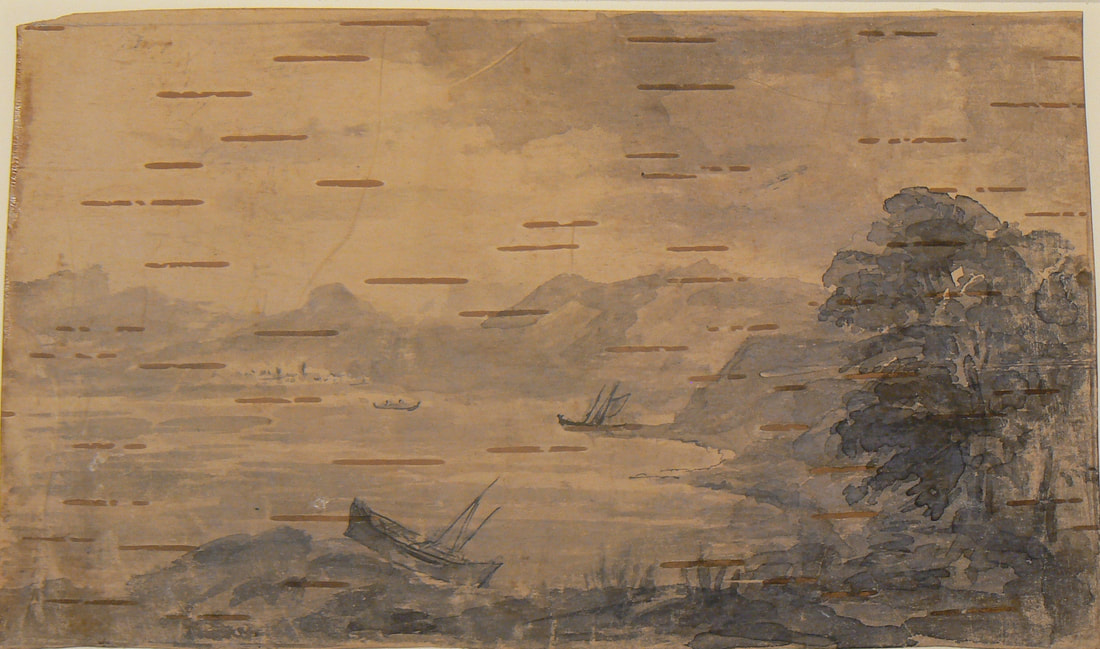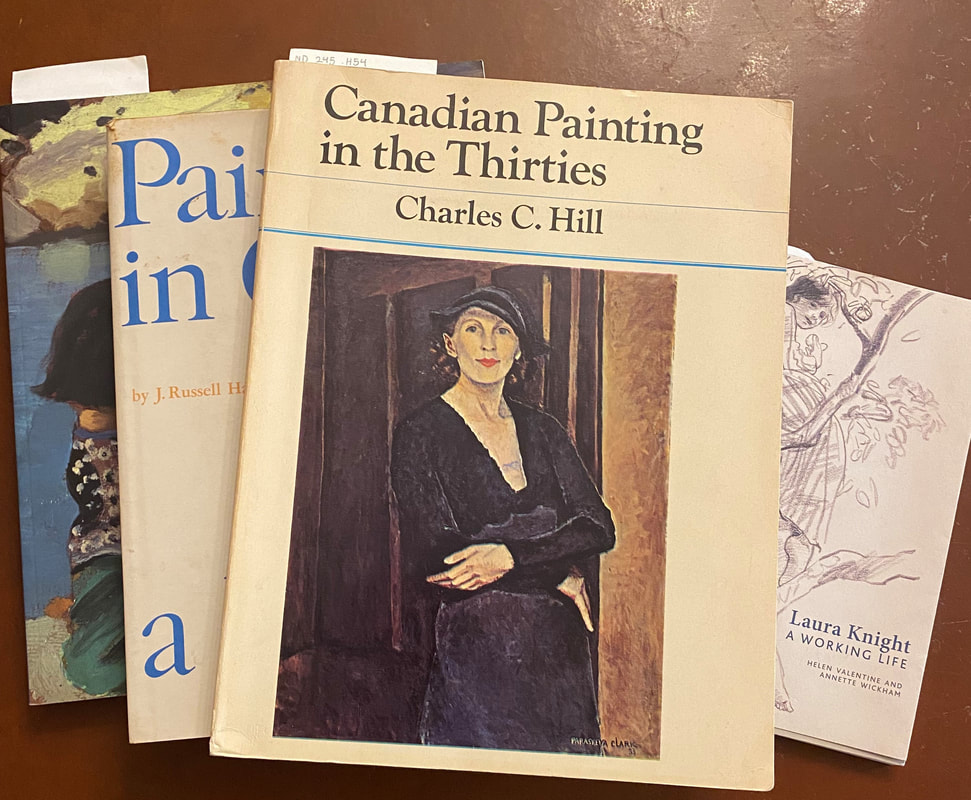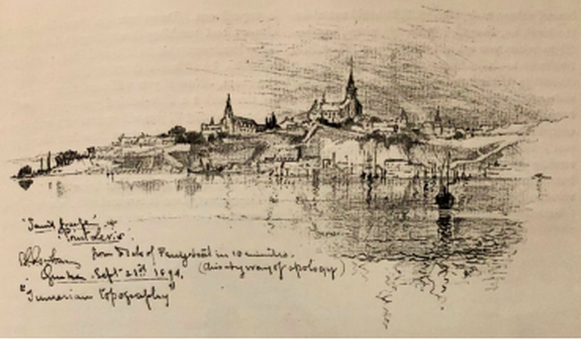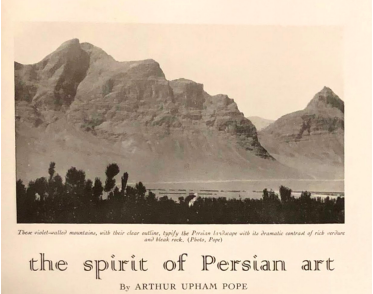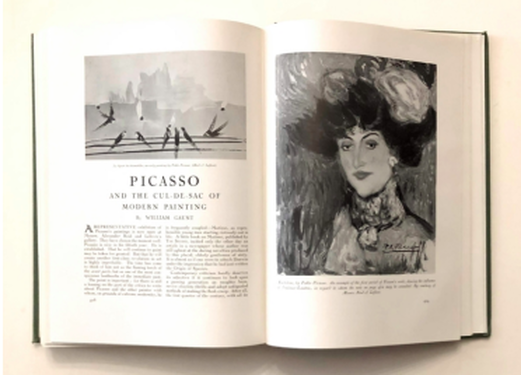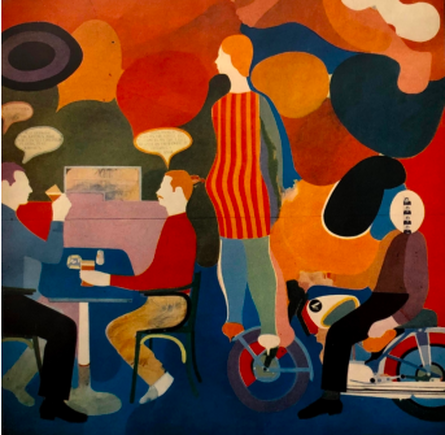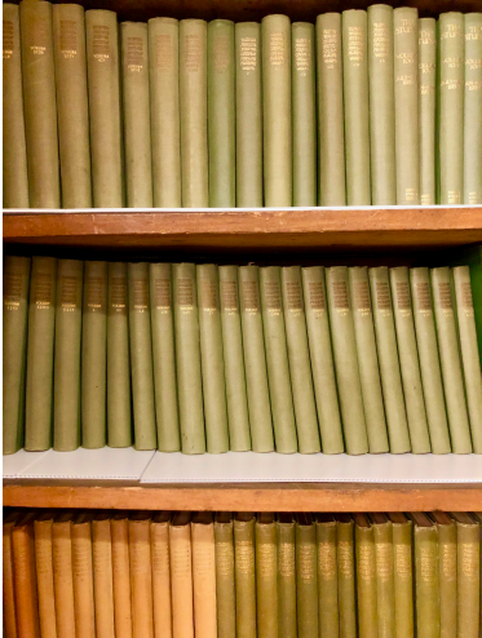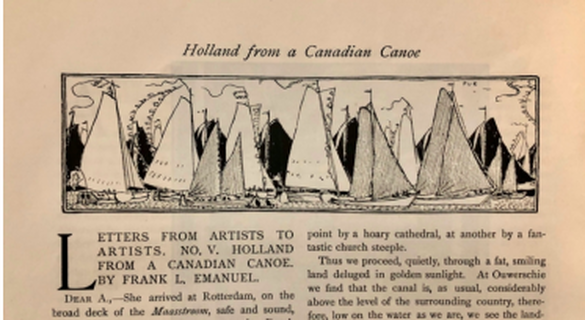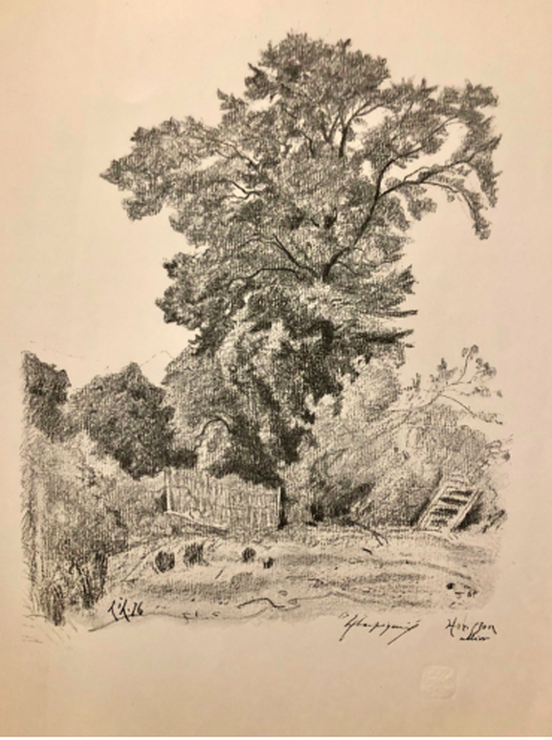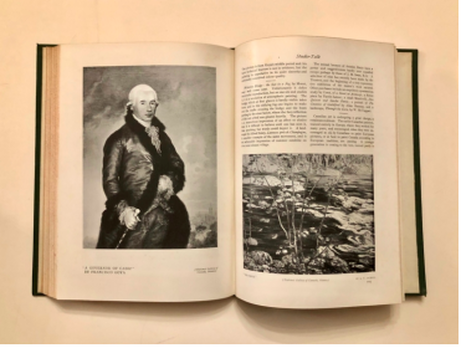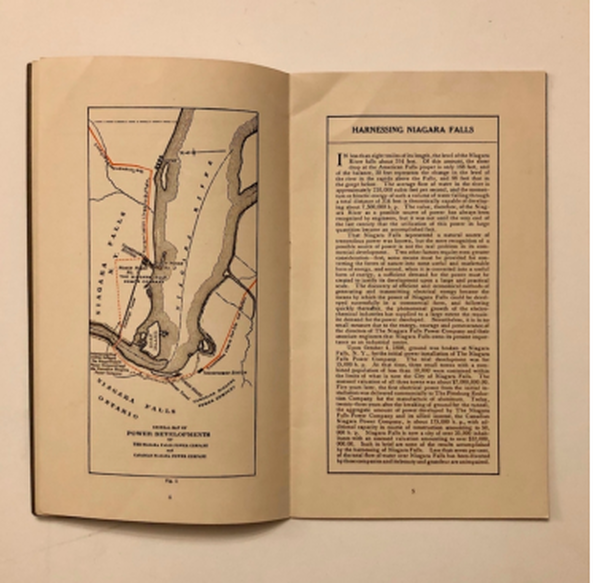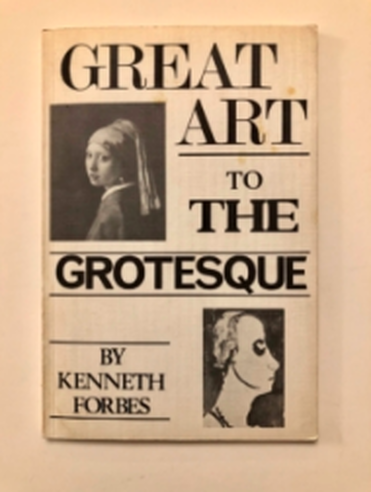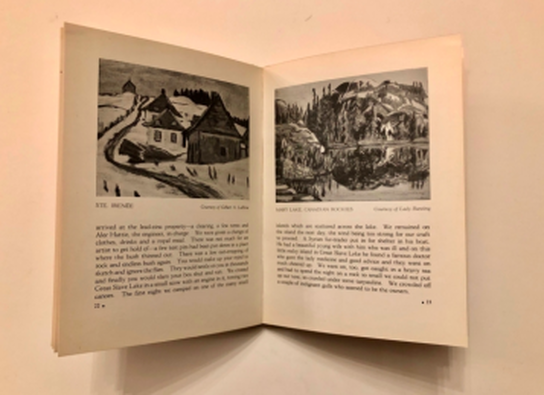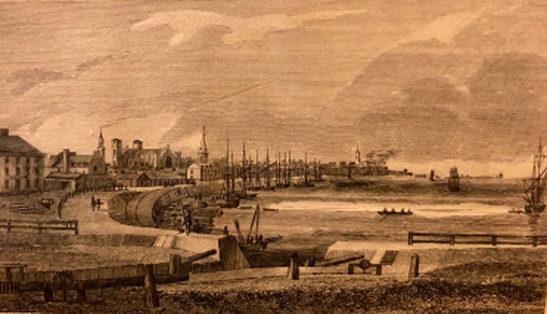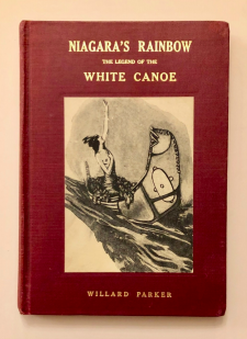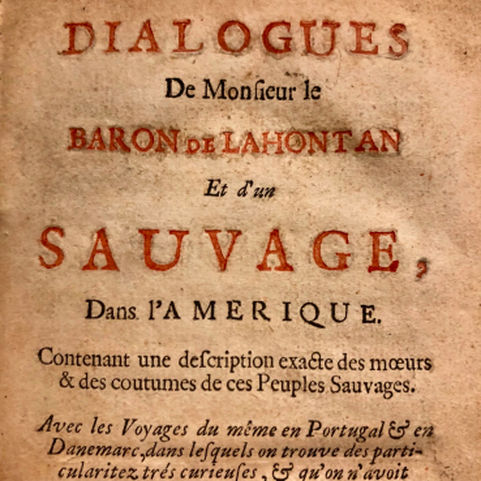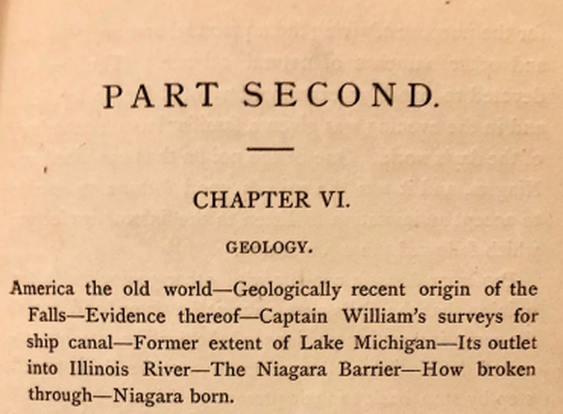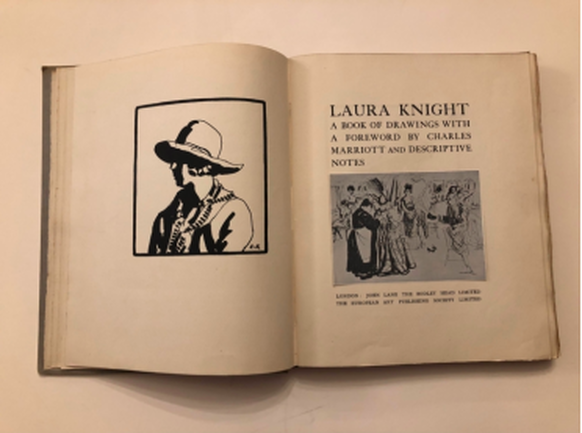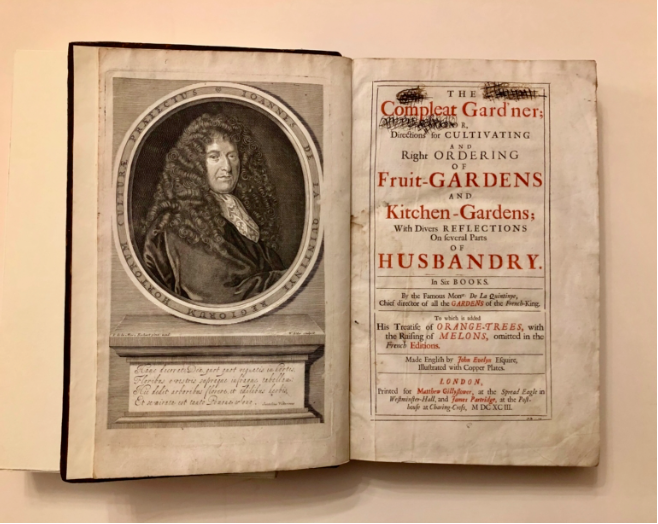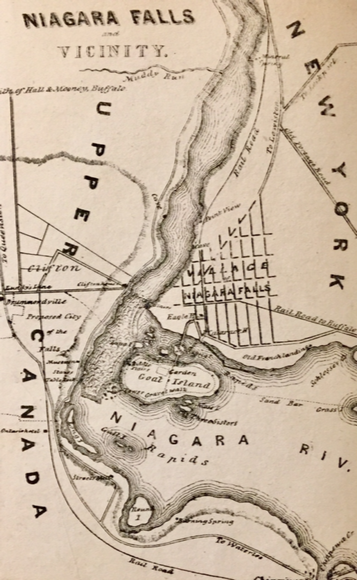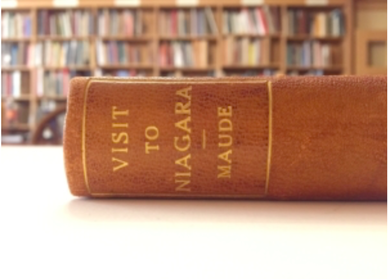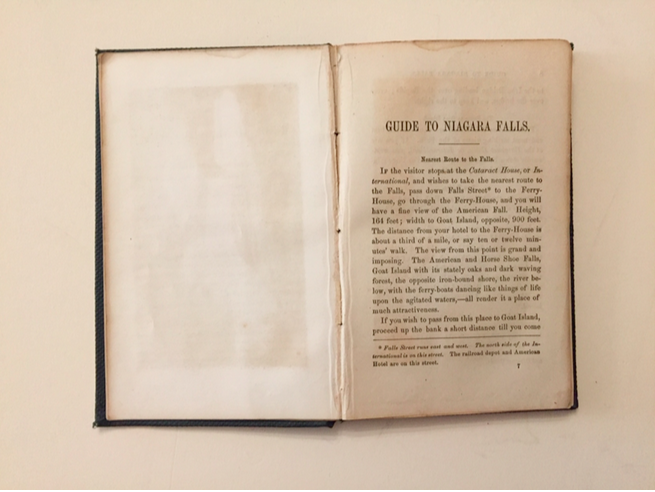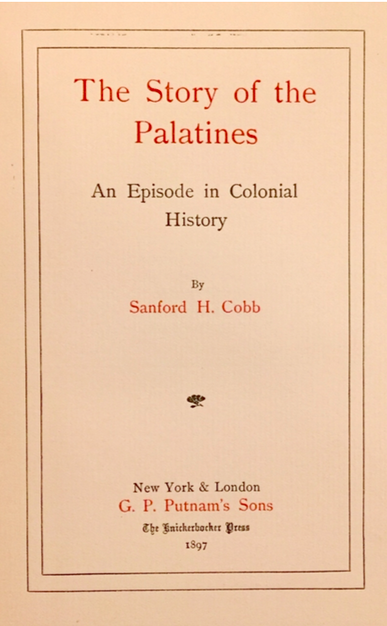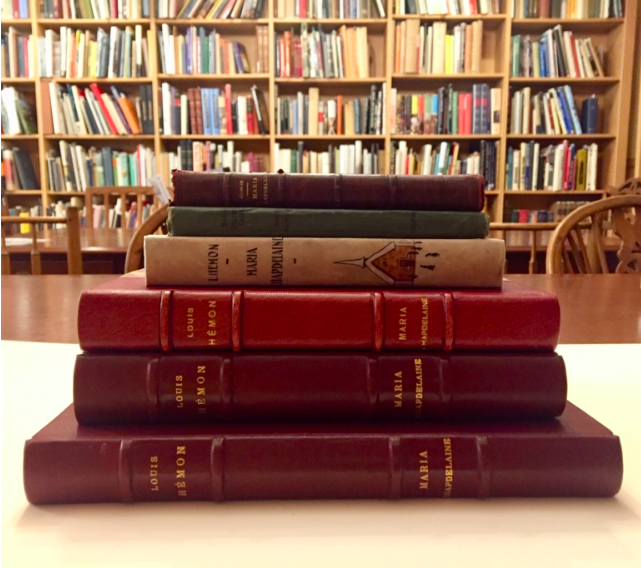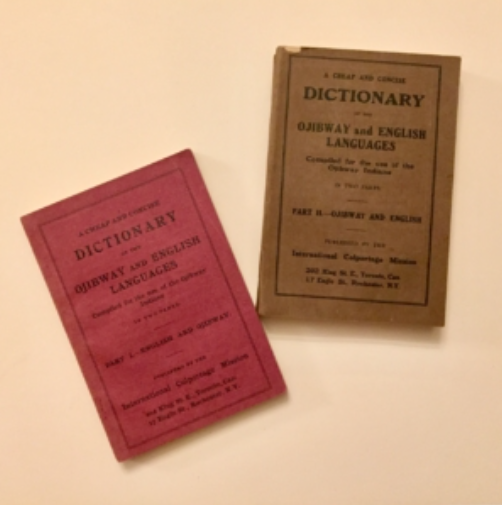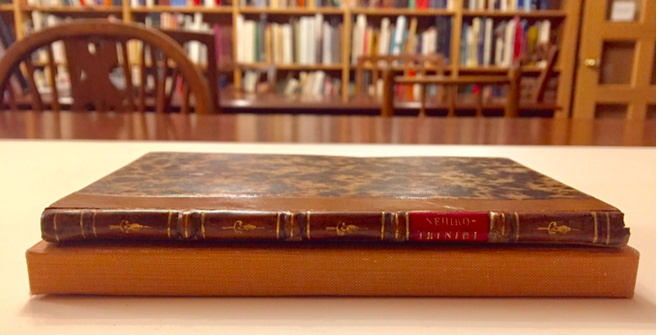BLOG
AuthorRiverBrink's blog features posts from staff, volunteers, and community members
|
|
April 30, 2023
Dr. Earle Waugh, Volunteer |
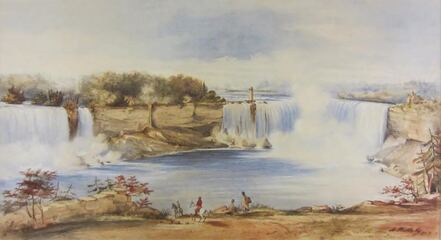
Further Notable Riverbrink Women Artists
Some are perhaps lesser-known, but certainly significant, the following artists represent a variety of style and concerns in our collection. Not that they represent a broad range of styles, mediums and focus of expression.
Alicia Killaly (1836-1908)
Alicia, also known as Alice, is best known for watercolour views of Canadian cities and towns, such as Toronto, Quebec City, Montreal and Niagara. She is classified as an amateur and self-taught painter; however, she is believed to have received some training under artist Cornelius Krieghoff. Her many smaller oil studies after Krieghoff’s subjects support this connection (see Barry Lord, A History of Painting in Canada, ND 240.L67). She lived in various Canadian cities, including Montreal, Toronto, and Quebec City, before marrying in 1871 and moving permanently to England. Most of her watercolours had an outdoor Canadian winter theme, with waterfalls, Niagara Falls, snow, and ice scenes playing an important part in her oeuvre. RiverBrink has one of her watercolours, a large view of Niagara Falls.
Ada Gladys Killins (1901–1963)
Ada is an artist of this area, born in Lincoln County, and obtaining her early training and teaching at Memorial school in Niagara Falls. Over summers, she trained with Franz Johnston at the Ontario College of Art. After a career in teaching, she retired to a cottage north of Toronto near Peterborough to paint fulltime. Perhaps inspired by her locale and the example of artist Carl Schaefer, she concentrated her works on landscapes, mostly in watercolours. She regularly displayed her work with the Canadian Society of Water Colour.
Image detail: Alicia Killaly, The Horseshoe Falls, Niagara, 1857, Watercolour, Samuel E, Weir Collection.
Some are perhaps lesser-known, but certainly significant, the following artists represent a variety of style and concerns in our collection. Not that they represent a broad range of styles, mediums and focus of expression.
Alicia Killaly (1836-1908)
Alicia, also known as Alice, is best known for watercolour views of Canadian cities and towns, such as Toronto, Quebec City, Montreal and Niagara. She is classified as an amateur and self-taught painter; however, she is believed to have received some training under artist Cornelius Krieghoff. Her many smaller oil studies after Krieghoff’s subjects support this connection (see Barry Lord, A History of Painting in Canada, ND 240.L67). She lived in various Canadian cities, including Montreal, Toronto, and Quebec City, before marrying in 1871 and moving permanently to England. Most of her watercolours had an outdoor Canadian winter theme, with waterfalls, Niagara Falls, snow, and ice scenes playing an important part in her oeuvre. RiverBrink has one of her watercolours, a large view of Niagara Falls.
Ada Gladys Killins (1901–1963)
Ada is an artist of this area, born in Lincoln County, and obtaining her early training and teaching at Memorial school in Niagara Falls. Over summers, she trained with Franz Johnston at the Ontario College of Art. After a career in teaching, she retired to a cottage north of Toronto near Peterborough to paint fulltime. Perhaps inspired by her locale and the example of artist Carl Schaefer, she concentrated her works on landscapes, mostly in watercolours. She regularly displayed her work with the Canadian Society of Water Colour.
Image detail: Alicia Killaly, The Horseshoe Falls, Niagara, 1857, Watercolour, Samuel E, Weir Collection.
March 31, 2023
Dr. Earle Waugh, Volunteer
Dr. Earle Waugh, Volunteer
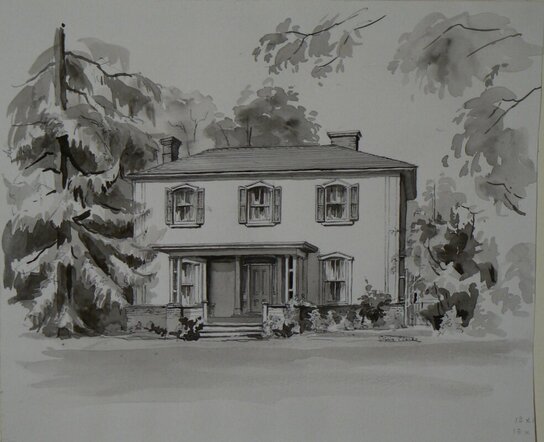
RiverBrink Women Artists continued
A multi-dimensional artist, Silvia Clarke was born in Cavendish, England, and trained at the Camberwell Schools of Arts and Crafts in London. Noted for her work for the BBC and the British government during the Second World War, when she worked at Bletchley Park, MI5’s code-breaking facility, Clarke immigrated to Canada after the War. She lived for a period in Toronto, then moved to Muskoka, then Port Stanley and finally to London, Ontario.
London has a strong artistic community, and we have already seen the place it had in the life and work of Florence Carlyle. Clarke worked for the federal government and the School of Medicine at the University of Western Ontario while attending night classes at H.B. Beal Secondary School. There she studied with Jack Chambers, Clare Bice and Irene Taylor, and developed her style beyond her British origins. Her strength as a painter focused on landscapes, florals and street scenes, which she composed and executed with delicacy and grace. She clearly was deeply influenced by British impressionism, which carried over into her work in Canada, with pastoral scenes a favourite. Interestingly, one of her most enduring activities was to support the construction of the London Regional Art Gallery, now Museum London, designed by Raymond Moriyama, then an emerging architect. Clark’s drawing of Sam Weir’s London home was a gift from Joyce de Vecchi.
Image detail: Silvia Clarke, 1911-1994, SAMUEL EDWARD WEIR’S RESIDENCE, LODON ONTARIO, n.d. Pen and black wash
A multi-dimensional artist, Silvia Clarke was born in Cavendish, England, and trained at the Camberwell Schools of Arts and Crafts in London. Noted for her work for the BBC and the British government during the Second World War, when she worked at Bletchley Park, MI5’s code-breaking facility, Clarke immigrated to Canada after the War. She lived for a period in Toronto, then moved to Muskoka, then Port Stanley and finally to London, Ontario.
London has a strong artistic community, and we have already seen the place it had in the life and work of Florence Carlyle. Clarke worked for the federal government and the School of Medicine at the University of Western Ontario while attending night classes at H.B. Beal Secondary School. There she studied with Jack Chambers, Clare Bice and Irene Taylor, and developed her style beyond her British origins. Her strength as a painter focused on landscapes, florals and street scenes, which she composed and executed with delicacy and grace. She clearly was deeply influenced by British impressionism, which carried over into her work in Canada, with pastoral scenes a favourite. Interestingly, one of her most enduring activities was to support the construction of the London Regional Art Gallery, now Museum London, designed by Raymond Moriyama, then an emerging architect. Clark’s drawing of Sam Weir’s London home was a gift from Joyce de Vecchi.
Image detail: Silvia Clarke, 1911-1994, SAMUEL EDWARD WEIR’S RESIDENCE, LODON ONTARIO, n.d. Pen and black wash
February 22, 2023
Dr. Earle Waugh, Volunteer
Dr. Earle Waugh, Volunteer
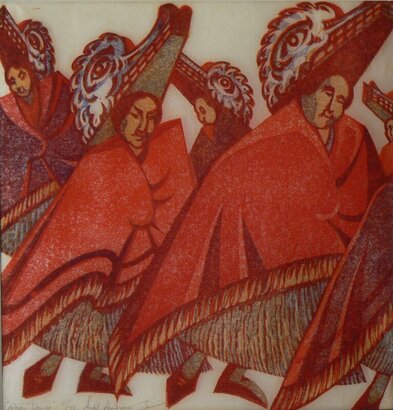
RiverBrink Women Artists 20th Century - Sybil Andrews; English-Canadian: 1898-1992
Sybil was born in Bury St. Edmunds, England and worked in an airplane factory as a welder. At the same time, she did art courses by correspondence and, following the end of WWI, she moved to London where she concentrated her efforts in art teaching and as a practising artist. Then, with WWII, she resumed working as a welder on warships. Following the war’s end, she and her husband abandoned England, moving to Campbell River, BC where they eked out a living building and repairing boats. Once she began displaying her art in BC, she became a local celebrity. Her emphasis on linocuts and her bright, direct and vivid pieces became very popular on Vancouver Island and spread quickly to Western Canada…indeed, her artistic creations caught on and were sought after by major collectors around the world. Her work is characterized by sharp incisive figures, bright, stunning colours and intriguing themes. Glenbow Art Institute in Calgary fully engaged with her work, and she eventually bequeathed her entire oeuvre, including her papers and studio contents to that institution. She continued to live and work in Campbell River until her death in 1992. There is one linocut in the Weir Collection at RiverBrink.
Sybil was born in Bury St. Edmunds, England and worked in an airplane factory as a welder. At the same time, she did art courses by correspondence and, following the end of WWI, she moved to London where she concentrated her efforts in art teaching and as a practising artist. Then, with WWII, she resumed working as a welder on warships. Following the war’s end, she and her husband abandoned England, moving to Campbell River, BC where they eked out a living building and repairing boats. Once she began displaying her art in BC, she became a local celebrity. Her emphasis on linocuts and her bright, direct and vivid pieces became very popular on Vancouver Island and spread quickly to Western Canada…indeed, her artistic creations caught on and were sought after by major collectors around the world. Her work is characterized by sharp incisive figures, bright, stunning colours and intriguing themes. Glenbow Art Institute in Calgary fully engaged with her work, and she eventually bequeathed her entire oeuvre, including her papers and studio contents to that institution. She continued to live and work in Campbell River until her death in 1992. There is one linocut in the Weir Collection at RiverBrink.
Image Detail: Sybil Andrews, Indian Dance, 1951, relief print japan paper and ink, Samuel E. Weir Collection
February 7, 2023
Dr. Earle Waugh, Volunteer
Dr. Earle Waugh, Volunteer
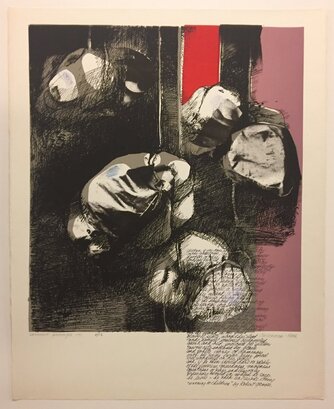
RiverBrink Women Artists 20th Century - Ghitta Caiserman-Roth 1923-2005
In Ghitta, we find the complex outcome of an artist’s social influences: from middle class Montreal, to the bohemian lifestyle of her friend and fellow artist Alexandre Bercovitch, to the rebel side of socialism and the common worker’s life, to the emotional response to Jewish family life. She was influenced by Mexican art related to murals and posters, a direction that gave her art a symbolist twist. She was born into a Romanian-Jewish family in Montreal, she studied in New York before returning to Montreal to teach and construct an artist’s community known as the Montreal Artists School. She was deeply affected by the Holocaust, since her parents had adopted a child whose parents were killed by Hitler and she struggled to move beyond an intellectual seeing of reality to the emotion hidden in one’s response to a scene. Her best art is regarded as symbolist in expression. While her poster work never made it into Alain Weill’s magnum opus The Poster (NC 1806.45 w4313 1985) She certainly deserves a place in Canadian production; see also Caiserman-Roth, Ghitta and Rhoda Cohen. Insights, Discoveries, Surprises: Drawing from the Model. McGill-Queens UP, 1993. There are three silkscreens by the artist in the RiverBrink collection.
In Ghitta, we find the complex outcome of an artist’s social influences: from middle class Montreal, to the bohemian lifestyle of her friend and fellow artist Alexandre Bercovitch, to the rebel side of socialism and the common worker’s life, to the emotional response to Jewish family life. She was influenced by Mexican art related to murals and posters, a direction that gave her art a symbolist twist. She was born into a Romanian-Jewish family in Montreal, she studied in New York before returning to Montreal to teach and construct an artist’s community known as the Montreal Artists School. She was deeply affected by the Holocaust, since her parents had adopted a child whose parents were killed by Hitler and she struggled to move beyond an intellectual seeing of reality to the emotion hidden in one’s response to a scene. Her best art is regarded as symbolist in expression. While her poster work never made it into Alain Weill’s magnum opus The Poster (NC 1806.45 w4313 1985) She certainly deserves a place in Canadian production; see also Caiserman-Roth, Ghitta and Rhoda Cohen. Insights, Discoveries, Surprises: Drawing from the Model. McGill-Queens UP, 1993. There are three silkscreens by the artist in the RiverBrink collection.
Image Detail: Ghitta Caiserman-Roth, Etching and Silkscreen, 1973-74, etching silkscreen, Samuel E. Weir Collection
August 23, 2022
Dr. Earle Waugh, Volunteer
Dr. Earle Waugh, Volunteer
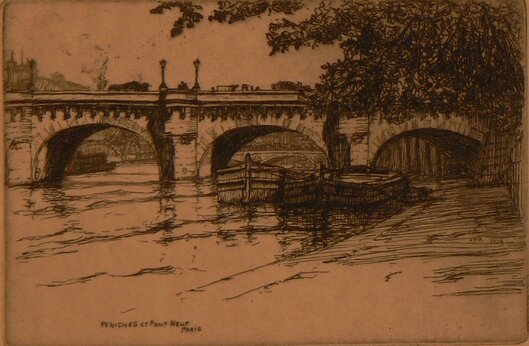
Riverbrink Women Artists: A Look at their Artistic Styles from the Mid-1800’s
Caroline Helene (Wilkinson) Armington 1875-1939
French impressionism style continues with this artist. Born in the small town of Brampton (now part of Toronto), she initially trained under JWL Forster in Toronto and then studied nursing at Guelph hospital. A gifted artist, she supported her schooling with her painting. Following graduation she took employment in New York, returning to Toronto in 1899 as a private nurse. During these travels, she met Frank Armington and together they left briefly for a stay in Paris, where they married. They returned to Canada and ultimately to Winnipeg where she taught painting at Havergal College. Apparently sensing the demand of more artistic training the couple returned to Paris and she entered the atelier of Académie Julian and others. It was during this period that she added etching to her interests, a medium that attracted widespread attention in Canada and the US. By 1911, three of her pieces were purchased by the National Gallery of Canada. She returned to her homeland and immediately received etching commissions. During the war the couple once again went to Europe and they served in Paris as nurse and orderly. Following the war, Lord Beaverbrook commissioned Caroline to do etchings for the Canadian War Memorials Collection. Her work was now becoming well known both here and abroad, so she embarked on a tour of the US and Europe. By 1934, she was again back in Paris, painting and etching scenes in Europe. She returned to New York early in 1939 and died there in the fall of that year. The Weir collection has one etching by her: a delightful Parisian bridge scene with fishing boats, probably from her sojourn in Paris around 1916.
Caroline Helene (Wilkinson) Armington 1875-1939
French impressionism style continues with this artist. Born in the small town of Brampton (now part of Toronto), she initially trained under JWL Forster in Toronto and then studied nursing at Guelph hospital. A gifted artist, she supported her schooling with her painting. Following graduation she took employment in New York, returning to Toronto in 1899 as a private nurse. During these travels, she met Frank Armington and together they left briefly for a stay in Paris, where they married. They returned to Canada and ultimately to Winnipeg where she taught painting at Havergal College. Apparently sensing the demand of more artistic training the couple returned to Paris and she entered the atelier of Académie Julian and others. It was during this period that she added etching to her interests, a medium that attracted widespread attention in Canada and the US. By 1911, three of her pieces were purchased by the National Gallery of Canada. She returned to her homeland and immediately received etching commissions. During the war the couple once again went to Europe and they served in Paris as nurse and orderly. Following the war, Lord Beaverbrook commissioned Caroline to do etchings for the Canadian War Memorials Collection. Her work was now becoming well known both here and abroad, so she embarked on a tour of the US and Europe. By 1934, she was again back in Paris, painting and etching scenes in Europe. She returned to New York early in 1939 and died there in the fall of that year. The Weir collection has one etching by her: a delightful Parisian bridge scene with fishing boats, probably from her sojourn in Paris around 1916.
Image Detail: Armington, Caroline Helena, Peniches et Pont Neuf, Paris, 1916
August 12, 2022
Dr. Earle Waugh, Volunteer
Dr. Earle Waugh, Volunteer

RiverBrink Women Artists: A Look at their Artistic Styles from the Mid-1800’s
Eva Theresa Bradshaw 1871-1938
In 1952, Paul Duval, a widely respected Canadian art critic published Canadian Drawings and Prints, (NC 141.D88) a volume concerned to present the core of the best to that point in time. Of the 89 artists featured, 10 are women. The disparity is telling. While pondering this fact, it has always been the case to cite social/cultural reasons—family responsibilities, educational opportunities and the like. But I wonder if we are not also seeing the dominance of male buyers and museum directors as factors. Consider Eva. Born in London, Ontario, (Weir’s home town) she spent her entire life there, becoming a well-known teacher of art despite being trained as a nurse. Noted for her brushwork, her treatments of flowers demonstrate her love of both their natural beauty and her embrace of the artistic style of impressionism. She also had considerable success with portraiture. Several of her works hang in The Royal Canadian Academy. She was a member of the Western Art League for three decades and was made an honorary member in 1915. Yet tellingly, she did not make it into Duval’s collection and, you guessed it, we have only one piece of her art. Perhaps, too, floral art had restricted public taste. Nevertheless, her demonstration of a carefully crafted brush skill deserves greater recognition.
The Green Kerchief, by Eva Bradshaw, will be on view in the exhibition The Figure: Life Drawing and Other Studies opening at RiverBrink September 10, 2022.
Image Detail: Eva Theresa Bradshaw, The Green Kerchief, oil paint on canvas, Samuel E. Weir Collection
Eva Theresa Bradshaw 1871-1938
In 1952, Paul Duval, a widely respected Canadian art critic published Canadian Drawings and Prints, (NC 141.D88) a volume concerned to present the core of the best to that point in time. Of the 89 artists featured, 10 are women. The disparity is telling. While pondering this fact, it has always been the case to cite social/cultural reasons—family responsibilities, educational opportunities and the like. But I wonder if we are not also seeing the dominance of male buyers and museum directors as factors. Consider Eva. Born in London, Ontario, (Weir’s home town) she spent her entire life there, becoming a well-known teacher of art despite being trained as a nurse. Noted for her brushwork, her treatments of flowers demonstrate her love of both their natural beauty and her embrace of the artistic style of impressionism. She also had considerable success with portraiture. Several of her works hang in The Royal Canadian Academy. She was a member of the Western Art League for three decades and was made an honorary member in 1915. Yet tellingly, she did not make it into Duval’s collection and, you guessed it, we have only one piece of her art. Perhaps, too, floral art had restricted public taste. Nevertheless, her demonstration of a carefully crafted brush skill deserves greater recognition.
The Green Kerchief, by Eva Bradshaw, will be on view in the exhibition The Figure: Life Drawing and Other Studies opening at RiverBrink September 10, 2022.
Image Detail: Eva Theresa Bradshaw, The Green Kerchief, oil paint on canvas, Samuel E. Weir Collection
June 1, 2022
Lindsay-Ann Chilcott
Lindsay-Ann Chilcott
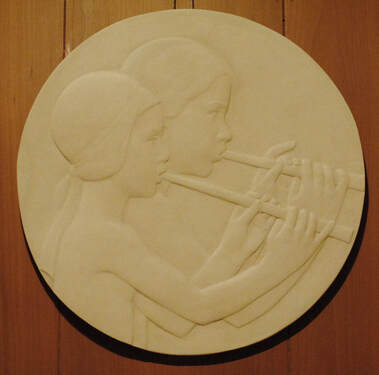
Celebrating Pride Month!
With Pride Month and National Best Friend’s Day (June 8) around the corner, what better way to celebrate than by taking a close look at Easter, by Florence Wyle? Made from painted plaster, in the style of a classical relief, the rondel depicts two figures in profile, blowing trumpets as if to announce the risen Christ. U.S. born Wyle (1881-1968) is closely associated with fellow sculptor Frances Loring (1887-1968); together, they are two of the earliest prominent Canadian sculptors.
Their relationship was both personal and professional, and lasted over 60 years. The couple met in 1905 as students at the Art Institute of Chicago. As women, they were radicals in society’s terms, since they rejected contemporary expectations of marriage and children. Their chosen medium was also radical, unusual for women artists at the time. In 1913, the pair moved into a studio in downtown Toronto and later occupied a former schoolhouse on Glenrose Avenue. By this time, the local community considered the pair Bohemians, as their appearance and behaviour stood out from the norm. During their lifetime, Wyle and Loring achieved considerable critical acclaim. But they also had their detractors and critics who dismissed them as ‘minor talents.’ in recent years these two artists have come to be celebrated as great radical sculptors, who made an important contribution to Canada’s artistic heritage.
Best friends and partners throughout their lifetime, more of their work can be seen at Oakes Garden in Niagara Falls. Sculptures by Frances Loring adorn the QEW in St. Catharines.
Image Detail: Florence Wyle, "Easter", painted plaster, n.d., RiverBrink Art Collection
With Pride Month and National Best Friend’s Day (June 8) around the corner, what better way to celebrate than by taking a close look at Easter, by Florence Wyle? Made from painted plaster, in the style of a classical relief, the rondel depicts two figures in profile, blowing trumpets as if to announce the risen Christ. U.S. born Wyle (1881-1968) is closely associated with fellow sculptor Frances Loring (1887-1968); together, they are two of the earliest prominent Canadian sculptors.
Their relationship was both personal and professional, and lasted over 60 years. The couple met in 1905 as students at the Art Institute of Chicago. As women, they were radicals in society’s terms, since they rejected contemporary expectations of marriage and children. Their chosen medium was also radical, unusual for women artists at the time. In 1913, the pair moved into a studio in downtown Toronto and later occupied a former schoolhouse on Glenrose Avenue. By this time, the local community considered the pair Bohemians, as their appearance and behaviour stood out from the norm. During their lifetime, Wyle and Loring achieved considerable critical acclaim. But they also had their detractors and critics who dismissed them as ‘minor talents.’ in recent years these two artists have come to be celebrated as great radical sculptors, who made an important contribution to Canada’s artistic heritage.
Best friends and partners throughout their lifetime, more of their work can be seen at Oakes Garden in Niagara Falls. Sculptures by Frances Loring adorn the QEW in St. Catharines.
Image Detail: Florence Wyle, "Easter", painted plaster, n.d., RiverBrink Art Collection
May 13, 2022
Dr. Earle Waugh, Volunteer
Dr. Earle Waugh, Volunteer
Riverbrink Women Artists #4
In 2014, Riverbrink had an exhibit featuring 35 women artists; their pieces comprised: 13 paintings, 5 sculptures, 11 prints, and 6 sculptures. At the time there were only these 35 women represented in the Weir Collection, most of them with one holding apiece. Few of them have gained a lasting representation in the art world…with, perhaps, the exception of Elizabeth Simcoe, Laura Knight, and Emily Carr. Several more women artists have subsequently been added to the RiverBrink collection, including work by Ghitta Caiserman and Daphne Odjig. Of course, the same may be said of many male artists, so some further evaluation may be in order.
For example, we might ask, what types of scenes do early artists present and how do they relate to collectors’ ideas? Are there themes in our collection which they prefer, which might indicate either Weir’s concerns or women’s emphases? What distinctive vision do they bring? If they are landscape artists, what scene do they prefer? These are large issues, even controversial, but given the claim that early Niagara women preferred painting the falls, along with every other itinerant painter. If we turn to broad-visioned studies on Canadian painters, such as that of art historian J. Russell Harper’s Painting in Canada: A History (ND 240.H3, 1977) it is structured according to French and English artistic interests…little of Indigenous art appears as relevant for analysis. Yet in our day, it is increasingly obvious that a multidimensional artistic tradition existed within each tribe and intersected with others among Indigenous artists and craftspeople. One would even have to think that these traditions impacted Canadian artistic expressions such as “people’s art, ”so-called “primitive art” and even “landscape art.” (One of Canada’s earliest water colour paintings is by Thomas Davies, Lower Part of the Falls of Ste. Anne, dated to 1790—see Paul Duval, Canadian Water Colour Painting (ND 1841.D8, Plate I) It seems that early Indigenous art was deemed either decorative or ritual-related, both of which were considered quaint and interesting, but unrelated to the ‘real’ artistic traditions of Europe. Acknowledging its significance as a distinctive tradition has been a long time in coming.
The murky history of Canadian art imagery begins with a controversial priest, Abbe Pommier, who apparently was the only painter in the 1600’s in Quebec. A painting attributed to him on the martyrdom of Jesuit fathers by the Huron is based on occurrences in Quebec in the 1630s. Even this is doubtful and may be a composite made in France and sent to Quebec. Pommier did paint the nun, Marie-Catharine at her death, in 1668, a seminal occurrence since she was head of the Hotel-Dieu Sisters whose work was important for Catholic tradition in the area in the 1600s. The figure is stylized and is provincial Baroque, which indicates the early trend: Canada was interpreted through local French painting styles, related to Christian votive subjects.
The intersection of Canadian themes might have blossomed with wood-carvers who could be trained as sculptors, but, alas, such a long apprenticeship (7 years) doomed the experiment.
Hence it would seem that the first distinctive “Canadian,” perhaps ‘provincial’ theme for painters was related not to people, but to landscape, and that took place after France had given up on the colony in North America and local impulses took over artistic sentiments. Indeed, the 1700’s developed into what has been called a “Golden Age” for art and artists in Quebec. Many provincial themes were captured during that time, among them a more concentrated effort to represent the environment within which people lived. (See also Michael Bell, for British painters/sailors’ views Painters in a New Land, ND 1842.B44, 1973, for James Meres’. he Town
and Harbour of Placentia, Newfoundland, from Castle Hill, 1786). The take-away from all this is that women artists from the 19th and 20th centuries who painted landscapes, including of the Falls, were really only responding to what had become a genuine Canadian ‘motif.’ To my mind, themes of the much-lauded Group of Seven were also heir to this tradition---but consider how long it took to develop!! (See our Charles Hill, The Group of Seven: Art for a Nation,—ND 245.G76. H54 1995).
In the next selection, we will explore a few of these painters to see what they tell us about the genre in this collection.
In 2014, Riverbrink had an exhibit featuring 35 women artists; their pieces comprised: 13 paintings, 5 sculptures, 11 prints, and 6 sculptures. At the time there were only these 35 women represented in the Weir Collection, most of them with one holding apiece. Few of them have gained a lasting representation in the art world…with, perhaps, the exception of Elizabeth Simcoe, Laura Knight, and Emily Carr. Several more women artists have subsequently been added to the RiverBrink collection, including work by Ghitta Caiserman and Daphne Odjig. Of course, the same may be said of many male artists, so some further evaluation may be in order.
For example, we might ask, what types of scenes do early artists present and how do they relate to collectors’ ideas? Are there themes in our collection which they prefer, which might indicate either Weir’s concerns or women’s emphases? What distinctive vision do they bring? If they are landscape artists, what scene do they prefer? These are large issues, even controversial, but given the claim that early Niagara women preferred painting the falls, along with every other itinerant painter. If we turn to broad-visioned studies on Canadian painters, such as that of art historian J. Russell Harper’s Painting in Canada: A History (ND 240.H3, 1977) it is structured according to French and English artistic interests…little of Indigenous art appears as relevant for analysis. Yet in our day, it is increasingly obvious that a multidimensional artistic tradition existed within each tribe and intersected with others among Indigenous artists and craftspeople. One would even have to think that these traditions impacted Canadian artistic expressions such as “people’s art, ”so-called “primitive art” and even “landscape art.” (One of Canada’s earliest water colour paintings is by Thomas Davies, Lower Part of the Falls of Ste. Anne, dated to 1790—see Paul Duval, Canadian Water Colour Painting (ND 1841.D8, Plate I) It seems that early Indigenous art was deemed either decorative or ritual-related, both of which were considered quaint and interesting, but unrelated to the ‘real’ artistic traditions of Europe. Acknowledging its significance as a distinctive tradition has been a long time in coming.
The murky history of Canadian art imagery begins with a controversial priest, Abbe Pommier, who apparently was the only painter in the 1600’s in Quebec. A painting attributed to him on the martyrdom of Jesuit fathers by the Huron is based on occurrences in Quebec in the 1630s. Even this is doubtful and may be a composite made in France and sent to Quebec. Pommier did paint the nun, Marie-Catharine at her death, in 1668, a seminal occurrence since she was head of the Hotel-Dieu Sisters whose work was important for Catholic tradition in the area in the 1600s. The figure is stylized and is provincial Baroque, which indicates the early trend: Canada was interpreted through local French painting styles, related to Christian votive subjects.
The intersection of Canadian themes might have blossomed with wood-carvers who could be trained as sculptors, but, alas, such a long apprenticeship (7 years) doomed the experiment.
Hence it would seem that the first distinctive “Canadian,” perhaps ‘provincial’ theme for painters was related not to people, but to landscape, and that took place after France had given up on the colony in North America and local impulses took over artistic sentiments. Indeed, the 1700’s developed into what has been called a “Golden Age” for art and artists in Quebec. Many provincial themes were captured during that time, among them a more concentrated effort to represent the environment within which people lived. (See also Michael Bell, for British painters/sailors’ views Painters in a New Land, ND 1842.B44, 1973, for James Meres’. he Town
and Harbour of Placentia, Newfoundland, from Castle Hill, 1786). The take-away from all this is that women artists from the 19th and 20th centuries who painted landscapes, including of the Falls, were really only responding to what had become a genuine Canadian ‘motif.’ To my mind, themes of the much-lauded Group of Seven were also heir to this tradition---but consider how long it took to develop!! (See our Charles Hill, The Group of Seven: Art for a Nation,—ND 245.G76. H54 1995).
In the next selection, we will explore a few of these painters to see what they tell us about the genre in this collection.
April 21, 2022
Dr. Earle Waugh, Volunteer
Dr. Earle Waugh, Volunteer

Riverbrink Women’s Artists #3
If you are searching for a definitive artistic sensibility among the Canadian women artists represented in Riverbrink’s collection, I suspect it would be a difficult task: most are single pieces with little stylistic or thematic elements binding them together. I suspect the same can be said of most collections of women artists in Canada, although that remains an issue for further exploration. It is probable that the first female European artistic expression was found among the monastery inhabitants; for example, there is a delightful story of a novice nun who joined the Sisters of the Congregation in Montreal in the late 1600’s who was sent to the kitchen to make bread. The results were a disaster. The artist, dubbed Sister Marie Barbier, decided to improve her culinary skills by calling on Jesus, in the shape of a painting of The Christ Child, which she hung over the stove. Presto, great bread! You can read about this in J. Russell Harper’s A People’s Art (ND 240.5P7 H32) p.30. (I wonder if this would help my kitchen skills?) Speaking of Montreal, it is instructive to see that the painting of the 17th century in Quebec was dominated, as is to be expected, by the Church. Even the Indigenous representations were filtered through faith, since Claude Chauchetière (1645-1705), as his painting of Catharine Tekakouita indicates, is of an Iroquois convert.(Gerard Monisset, La peinture tradiitonalle au Canada français (ND240.M6, p.16). And as we all know too well, none of the artistic tastes of the first peoples were represented among the preserved art history of the country by the early Europeans.
Anyway, the jump from Montreal to Niagara and Elizabeth Simcoe is one whose handy brush provides some clues—think The King’s Head Inn logo sketched by her while she had breakfast at the inn near Burlington, Ontario (Ibid, p.55) dated 1794. What I take from this is that original Canadian women’s art had a local and folksy vein to it---a style I would term “Grounded” or “Rooted” rather than universal. Perhaps the same can be said of Sam Weir’s choices. In our collection, you leap from Simcoe’s watercolour painting to Knight and Wyle, that is, in a time leap from late 18th century to the late 19th, from the English impressionism of Knight to the sculptural styles of Wyle. It perhaps represents the ambiguity and promise of Canadian culture more clearly than we would like.
Dame Laura Knight 1877-1970
Laura Johnson had a tough early life. Her father left the family after her birth, she was constantly bedevilled by lack of finances and, of course, her early works were panned. Her most famous painting now, I think, is of her Self Portrait with a Nude, painted in 1913 when women were not supposed to be drawing women nudes. Naturally the locals scuttled it, but she kept on painting. It now is often cited as a foundational piece of self-portraiture by a female artist. She often painted operas, circuses, and artistic activities. She has a certain “oomph” as they say…we would call it gutsy. Eventually she became widely recognized, and even had a commission for a Canadian mural during the second world war. Her most famous war work was at the Nuremberg trials, work that combined realism with details of destruction. She was the first woman since 1796 to be displayed at the Royal Academy. Her interest to Weir may have come through her commission in 1916 by the Canadian government to paint a canvas of Physical Training in Camp, whose theme was promoting Canadian soldiers preparing for war while in England. Since she painted such a broad range of subjects, her works obviously appealed to many tastes. We have several of her creations, but none on display at the moment.
Florence Wyle 1881-1968
We can jokingly blame Toronto for Florence Wyle. She was actually born in Illinois and schooled at the Art Institute of Chicago. When her teacher, mentor and partner Frances Loring moved to the Canadian city, she followed thereafter and spent her life in the area. She later concentrated on large sculptures, such as the Guelph farm animal piece. She worked in clay, stone and wood, but she also wrote and published poetry. She and Ann Savage, another Montreal artist from the so-called Beaver Hall Group (a studio in Montreal) travelled to BC. (Charles C. Hill, Canadian Painting in the Thirties, pp.39-43 ND245. H54) and (Christine Boyanoski, Loring and Wyle: A Sculptors' Legacy (NB 249.L6.B69 1987). We have four plaster reliefs by Wyle, one large medallion-type cast titled Easter. None were acquired by Sam Weir.
If you are searching for a definitive artistic sensibility among the Canadian women artists represented in Riverbrink’s collection, I suspect it would be a difficult task: most are single pieces with little stylistic or thematic elements binding them together. I suspect the same can be said of most collections of women artists in Canada, although that remains an issue for further exploration. It is probable that the first female European artistic expression was found among the monastery inhabitants; for example, there is a delightful story of a novice nun who joined the Sisters of the Congregation in Montreal in the late 1600’s who was sent to the kitchen to make bread. The results were a disaster. The artist, dubbed Sister Marie Barbier, decided to improve her culinary skills by calling on Jesus, in the shape of a painting of The Christ Child, which she hung over the stove. Presto, great bread! You can read about this in J. Russell Harper’s A People’s Art (ND 240.5P7 H32) p.30. (I wonder if this would help my kitchen skills?) Speaking of Montreal, it is instructive to see that the painting of the 17th century in Quebec was dominated, as is to be expected, by the Church. Even the Indigenous representations were filtered through faith, since Claude Chauchetière (1645-1705), as his painting of Catharine Tekakouita indicates, is of an Iroquois convert.(Gerard Monisset, La peinture tradiitonalle au Canada français (ND240.M6, p.16). And as we all know too well, none of the artistic tastes of the first peoples were represented among the preserved art history of the country by the early Europeans.
Anyway, the jump from Montreal to Niagara and Elizabeth Simcoe is one whose handy brush provides some clues—think The King’s Head Inn logo sketched by her while she had breakfast at the inn near Burlington, Ontario (Ibid, p.55) dated 1794. What I take from this is that original Canadian women’s art had a local and folksy vein to it---a style I would term “Grounded” or “Rooted” rather than universal. Perhaps the same can be said of Sam Weir’s choices. In our collection, you leap from Simcoe’s watercolour painting to Knight and Wyle, that is, in a time leap from late 18th century to the late 19th, from the English impressionism of Knight to the sculptural styles of Wyle. It perhaps represents the ambiguity and promise of Canadian culture more clearly than we would like.
Dame Laura Knight 1877-1970
Laura Johnson had a tough early life. Her father left the family after her birth, she was constantly bedevilled by lack of finances and, of course, her early works were panned. Her most famous painting now, I think, is of her Self Portrait with a Nude, painted in 1913 when women were not supposed to be drawing women nudes. Naturally the locals scuttled it, but she kept on painting. It now is often cited as a foundational piece of self-portraiture by a female artist. She often painted operas, circuses, and artistic activities. She has a certain “oomph” as they say…we would call it gutsy. Eventually she became widely recognized, and even had a commission for a Canadian mural during the second world war. Her most famous war work was at the Nuremberg trials, work that combined realism with details of destruction. She was the first woman since 1796 to be displayed at the Royal Academy. Her interest to Weir may have come through her commission in 1916 by the Canadian government to paint a canvas of Physical Training in Camp, whose theme was promoting Canadian soldiers preparing for war while in England. Since she painted such a broad range of subjects, her works obviously appealed to many tastes. We have several of her creations, but none on display at the moment.
Florence Wyle 1881-1968
We can jokingly blame Toronto for Florence Wyle. She was actually born in Illinois and schooled at the Art Institute of Chicago. When her teacher, mentor and partner Frances Loring moved to the Canadian city, she followed thereafter and spent her life in the area. She later concentrated on large sculptures, such as the Guelph farm animal piece. She worked in clay, stone and wood, but she also wrote and published poetry. She and Ann Savage, another Montreal artist from the so-called Beaver Hall Group (a studio in Montreal) travelled to BC. (Charles C. Hill, Canadian Painting in the Thirties, pp.39-43 ND245. H54) and (Christine Boyanoski, Loring and Wyle: A Sculptors' Legacy (NB 249.L6.B69 1987). We have four plaster reliefs by Wyle, one large medallion-type cast titled Easter. None were acquired by Sam Weir.
Image Detail: Dame Laura Knight, Untitled (Ballet Dancers), 1918-1965. Samuel E. Weir Collection
April 15, 2022
Dr. Earle Waugh, Volunteer
Dr. Earle Waugh, Volunteer
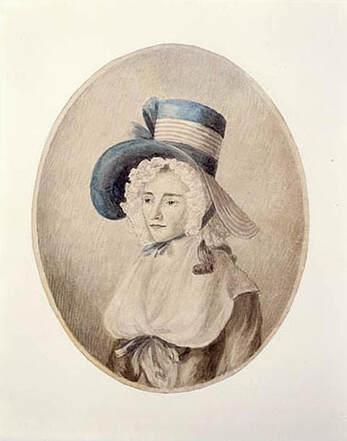
Riverbrink Women’s Artists #2
Elizabeth Simcoe 1762-1850.
We all know about Elizabeth. Well students around here do anyway. Elizabeth Posthuma Gwillim Simcoe. (Can you imagine the number of eyebrows raised now if you named your baby daughter Posthuma?) Maybe it empowered our Elizabeth, because she seemed to leave a lasting impact around here when her husband, John Graves Simcoe, became lieutenant governor of the new province of Upper Canada in 1792. Mother of 11 children, she cut quite a figure for the little time she was in Newark, organizing social meetings, laying on impressive dinners and dances, while generally impressing with her distinctively Victorian manners and airs. Despite her regal attitude toward the lesser locals, she had an insatiable interest in flora and fauna, along with considerable insights about the geography of Canada, the tensions with the French in Quebec, perspectives on religion and culture. Her diaries provide much detail about her short time here. But our interest is her paintings and engravings. She often sent paintings to friends in Europe, with various versions of the same scene. She had interesting motivations: pictures were reminders of what she liked best in her travels: “I took no sketch of a place I never wish to recollect.”
Her water-colours are valuable to us for placing the scene in the 1790s in Upper Canada, as well as indicating what scenery was of interest to a high-born English lady. As such, they provide some sense of accuracy and detail for the time and place…an early vision of Canada.
The Albany Institute of History and Art published Painting in Canada: A Selective Historical Survey in 1946 (ND 240.A6) in which it notes that the late 1700’s indicates more than just the importation of European interests to Canada, but “the topographic water color now being in style, it is the kind of painting that first appears in the rest of Canada” …not just in Quebec. (p.11); it sees Elizabeth Simcoe as the first of the artists in Ontario to embrace this form of art. (The other is Wilhelm Berczy of a German colony at Markham in 1792). “They were persons curious about everything, noting their visual impressions in their precious sketch books and revealing to us in this way the Canada of other days in its immensity and its silent solitude, in the gentle manners of its colonial homes and the grandeur of its virgin territory. “(p.11-12) In effect, our Elizabeth established an artistic viewpoint of Upper Canada that was to resonate with several other painters…Agnes Fitzgibbons, Anna Jameson, Richard Coates, James Hamilton, John Grant, Bainbridge, …certainly no mean feat. This places distinctive Canadian art earlier than the those from Krieghoff and Kane in the 1800’s, the usual starting point for Canadian art. Yet neither she, nor the painters that came after her established a school or a type of artistic vision for Canada…we would have to wait until the Group of Seven for that phenomenon to occur.
We have in the Weir Collection some eight pieces…including a watercolour on birch bark currently on display. See it in the exhibition Drawing on the Land located on the upper level.
Elizabeth Simcoe 1762-1850.
We all know about Elizabeth. Well students around here do anyway. Elizabeth Posthuma Gwillim Simcoe. (Can you imagine the number of eyebrows raised now if you named your baby daughter Posthuma?) Maybe it empowered our Elizabeth, because she seemed to leave a lasting impact around here when her husband, John Graves Simcoe, became lieutenant governor of the new province of Upper Canada in 1792. Mother of 11 children, she cut quite a figure for the little time she was in Newark, organizing social meetings, laying on impressive dinners and dances, while generally impressing with her distinctively Victorian manners and airs. Despite her regal attitude toward the lesser locals, she had an insatiable interest in flora and fauna, along with considerable insights about the geography of Canada, the tensions with the French in Quebec, perspectives on religion and culture. Her diaries provide much detail about her short time here. But our interest is her paintings and engravings. She often sent paintings to friends in Europe, with various versions of the same scene. She had interesting motivations: pictures were reminders of what she liked best in her travels: “I took no sketch of a place I never wish to recollect.”
Her water-colours are valuable to us for placing the scene in the 1790s in Upper Canada, as well as indicating what scenery was of interest to a high-born English lady. As such, they provide some sense of accuracy and detail for the time and place…an early vision of Canada.
The Albany Institute of History and Art published Painting in Canada: A Selective Historical Survey in 1946 (ND 240.A6) in which it notes that the late 1700’s indicates more than just the importation of European interests to Canada, but “the topographic water color now being in style, it is the kind of painting that first appears in the rest of Canada” …not just in Quebec. (p.11); it sees Elizabeth Simcoe as the first of the artists in Ontario to embrace this form of art. (The other is Wilhelm Berczy of a German colony at Markham in 1792). “They were persons curious about everything, noting their visual impressions in their precious sketch books and revealing to us in this way the Canada of other days in its immensity and its silent solitude, in the gentle manners of its colonial homes and the grandeur of its virgin territory. “(p.11-12) In effect, our Elizabeth established an artistic viewpoint of Upper Canada that was to resonate with several other painters…Agnes Fitzgibbons, Anna Jameson, Richard Coates, James Hamilton, John Grant, Bainbridge, …certainly no mean feat. This places distinctive Canadian art earlier than the those from Krieghoff and Kane in the 1800’s, the usual starting point for Canadian art. Yet neither she, nor the painters that came after her established a school or a type of artistic vision for Canada…we would have to wait until the Group of Seven for that phenomenon to occur.
We have in the Weir Collection some eight pieces…including a watercolour on birch bark currently on display. See it in the exhibition Drawing on the Land located on the upper level.
Image Detail top: Portrait of Elizabeth Simcoe painted by Mary Anne Burges (1763-1813) source: https://en.wikipedia.org/wiki/Elizabeth_Simcoe
Image Detail Bottom: Elizabeth Simcoe, Watercolour on birchbark, 1790's, Samuel E. Weir Collection
Image Detail Bottom: Elizabeth Simcoe, Watercolour on birchbark, 1790's, Samuel E. Weir Collection
February 19, 2022
Dr. Earle Waugh, Volunteer
Dr. Earle Waugh, Volunteer
Where were the ladies? Women Artists in the Weir Collection
Women artists just didn’t hack it…that’s clear. But It's a challenge trying to figure why this should be, especially in a medium that stressed aesthetics. Of course, the usual culprit is socio-cultural…women were to stay home, do the cooking and tend the kids. It is true, for example, that no woman artist was allowed to exhibit by the Royal Academy in London before 1929. But Canada, colony as it was, clearly was not always in sync with what was culturally happening abroad: women, like Elizabeth Simcoe (yes, she painted, see below!) cut a pretty high figure in the fledgeling development of the Upper Canada colony. Still, being in the public eye didn’t seem to translate into widespread acceptance of female artistic talent.
Sam Weir’s collection indicates another reason: Art by women did not grow financially the way men’s did: “Follow the money, baby!” But there’s more. It has to do with lack of interest on Canadians’ part for their own lived experience…notice that until the Group of Seven came along, Canada’s landscape was conceived as the dramatic... there would be little concern for a Van Gogh peasant asleep in a haystack in Canada! Consider Niagara Falls landscapes, for example. I love the line in J. Russell Harper’s Everyman’s Canada on McGill’s art collection: “The ‘Falls’ were the lady amateur’s ultimate ambition a hundred years ago..” (Weir Collection ND 244.C3), perhaps a glimpse into why our landscapes didn’t make the grade, to say nothing of the erasure of women artists in the collective psyche!
Then again, the venue: for Canadian collectors, most aspiring artists, even women, sketched in Europe, about European environments. (Check out Paul Duval’s Canadian Drawings and Prints [Weir Collection, NC 141.D88] surveying things in Canada up to 1952---nary one on Canada!). And when one reads Maurice Gagnon’s Sur un Etat Actuel de la Peinture Canadienne (Weir Collection Nd 245.G5) published in Montreal in 1945 not even Emily Carr rated as a Canadian artist!
There has to be something going on in Canadian aesthetics too: I’ve often thought that Emily Carr really only made the grade when she brought a distinctive spiritual sensitivity to West Coast landscapes, no doubt fostered by Lawren Harris’s theosophic ideas, but a panache certainly devoid in most rural Canadian scenes of an impressionistic or otherwise vein. Further, art is associated with sophistication; consider, for example, Paraskeva Clark or Pegi Nicol, whose works were cited in Charles Hill’s Canadian Painting in the Thirties, (Weir Collection, ND 245.H54 ) both of whom painted in Toronto, but for Russian born and trained Clark, at least, landscape painting in Canada was somewhat a poor cousin to European scenes.
It may be that focussing on the Canadian situation, and women artists’ vision in particular, was regarded as just too much navel gazing for Canadian taste. I suppose the Group of Seven for example, might be criticized for having a nostalgic vision at their core—a hope of ‘fixing’ the place as visually significant--perhaps a grasping for an ideal that Canada’s industrial development was wiping out. Still, further on in time, landscape painting firms the world and catches the moment. As such it is solid ground for a direction yet to be taken. On the same ground, women’s vision is worth exploring in our collection for what it tells us about Canadian trends.
Sam Weir’s collection indicates another reason: Art by women did not grow financially the way men’s did: “Follow the money, baby!” But there’s more. It has to do with lack of interest on Canadians’ part for their own lived experience…notice that until the Group of Seven came along, Canada’s landscape was conceived as the dramatic... there would be little concern for a Van Gogh peasant asleep in a haystack in Canada! Consider Niagara Falls landscapes, for example. I love the line in J. Russell Harper’s Everyman’s Canada on McGill’s art collection: “The ‘Falls’ were the lady amateur’s ultimate ambition a hundred years ago..” (Weir Collection ND 244.C3), perhaps a glimpse into why our landscapes didn’t make the grade, to say nothing of the erasure of women artists in the collective psyche!
Then again, the venue: for Canadian collectors, most aspiring artists, even women, sketched in Europe, about European environments. (Check out Paul Duval’s Canadian Drawings and Prints [Weir Collection, NC 141.D88] surveying things in Canada up to 1952---nary one on Canada!). And when one reads Maurice Gagnon’s Sur un Etat Actuel de la Peinture Canadienne (Weir Collection Nd 245.G5) published in Montreal in 1945 not even Emily Carr rated as a Canadian artist!
There has to be something going on in Canadian aesthetics too: I’ve often thought that Emily Carr really only made the grade when she brought a distinctive spiritual sensitivity to West Coast landscapes, no doubt fostered by Lawren Harris’s theosophic ideas, but a panache certainly devoid in most rural Canadian scenes of an impressionistic or otherwise vein. Further, art is associated with sophistication; consider, for example, Paraskeva Clark or Pegi Nicol, whose works were cited in Charles Hill’s Canadian Painting in the Thirties, (Weir Collection, ND 245.H54 ) both of whom painted in Toronto, but for Russian born and trained Clark, at least, landscape painting in Canada was somewhat a poor cousin to European scenes.
It may be that focussing on the Canadian situation, and women artists’ vision in particular, was regarded as just too much navel gazing for Canadian taste. I suppose the Group of Seven for example, might be criticized for having a nostalgic vision at their core—a hope of ‘fixing’ the place as visually significant--perhaps a grasping for an ideal that Canada’s industrial development was wiping out. Still, further on in time, landscape painting firms the world and catches the moment. As such it is solid ground for a direction yet to be taken. On the same ground, women’s vision is worth exploring in our collection for what it tells us about Canadian trends.
March 27, 2020
Dr. Earle Waugh, Volunteer
Dr. Earle Waugh, Volunteer
RiverBrink Gems: The Studio 3
Bertram Grosvenor Goodhue, Quebec, 1894 (The Studio, Volume 5, 1895, 201)
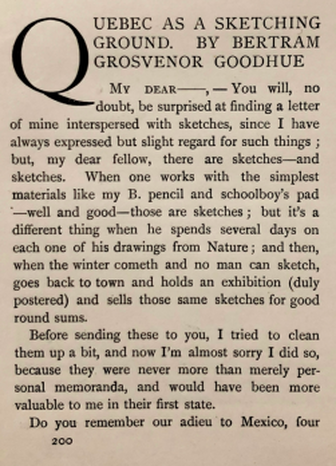
Canadian Art Transitions noted in London-based, The Studio.
Riverbrink’s collection begins with Volume One, 1893 and ends with Volume 185, June,1965. It should be noted that The Studio had a rather broad vision of art, ranging from the traditional painting and sculptural art of Europe to embroidery, posters, printmaking, photography, furniture, gardens, architecture various crafts and even gas fittings! Its primary goal was to provide a resource book for artists and collectors, both categories understood in the broadest terms. The following attempts an overview of the issues associated with Canada in the journal.
Quite amazing, really. This chap, Bertram Grosvenor Goodhue starts off his “Quebec as a Sketching Ground” (Volume 5, 1895, 200-209) and goads one into it: “Mexico is beauty, Quebec is picturesque and no real beauty.” That would seem to be enough to come out fighting. But then he digs tongue firmly in cheek. “One ought to read up on the French and Indian wars before starting.”
He doesn’t believe a word of what he’s writing. Sketches of Chateau Frontenac, Champlain street, Sous le Cap, even some folks from the marketplace. The note is full of malarkey: Bring tobacco, since what you find here “isn’t really tobacco at all, but it will not suit your fastidious palate is certain.” He’s been putting you on, since he ends his choices of places to paint with: “..the silent, mysterious fortress above, and the seething lamplit old town below; and looking across the shimmering Saint Lawrence, we will compare notes with Mexico, and decide what beauty is all over again.” PS. I like his sketches. Canadian art is mentioned in a brief note in Volume 17, 1899 (62) noting that the Royal Canadian Academy had a showing in Montreal. 53 artists were on displayed 140 paintings. The note features two female figures, one in a hayfield, the other a pastoral: “the tones are subdued, the treatment simple, and the effect essentially decorative.” Since one was by the president of the Academy, I doubt he was pleased.
Riverbrink’s collection begins with Volume One, 1893 and ends with Volume 185, June,1965. It should be noted that The Studio had a rather broad vision of art, ranging from the traditional painting and sculptural art of Europe to embroidery, posters, printmaking, photography, furniture, gardens, architecture various crafts and even gas fittings! Its primary goal was to provide a resource book for artists and collectors, both categories understood in the broadest terms. The following attempts an overview of the issues associated with Canada in the journal.
Quite amazing, really. This chap, Bertram Grosvenor Goodhue starts off his “Quebec as a Sketching Ground” (Volume 5, 1895, 200-209) and goads one into it: “Mexico is beauty, Quebec is picturesque and no real beauty.” That would seem to be enough to come out fighting. But then he digs tongue firmly in cheek. “One ought to read up on the French and Indian wars before starting.”
He doesn’t believe a word of what he’s writing. Sketches of Chateau Frontenac, Champlain street, Sous le Cap, even some folks from the marketplace. The note is full of malarkey: Bring tobacco, since what you find here “isn’t really tobacco at all, but it will not suit your fastidious palate is certain.” He’s been putting you on, since he ends his choices of places to paint with: “..the silent, mysterious fortress above, and the seething lamplit old town below; and looking across the shimmering Saint Lawrence, we will compare notes with Mexico, and decide what beauty is all over again.” PS. I like his sketches. Canadian art is mentioned in a brief note in Volume 17, 1899 (62) noting that the Royal Canadian Academy had a showing in Montreal. 53 artists were on displayed 140 paintings. The note features two female figures, one in a hayfield, the other a pastoral: “the tones are subdued, the treatment simple, and the effect essentially decorative.” Since one was by the president of the Academy, I doubt he was pleased.
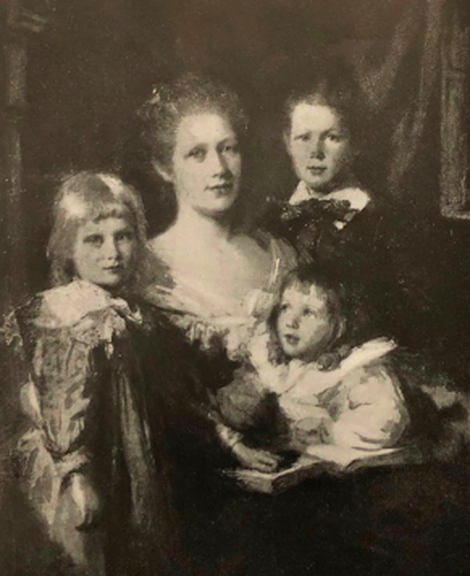
A better gauge of Canadian art is found in Volume 19, 1900 (68-69). Robert Harris is featured. Harris was Welsh but lived in Canada from his youth; he travelled extensively in Europe and studied European art from Holland to Spain. At the time of this publication he was president of the Academy: “He has gained considerably in breadth of treatment, sureness of execution, and especially in richness of colour, and every year distinct and meritorious progress is observable in his productions.” The fact is he painted portraits of prominent people, which seems to have been his forte. The painting reproduced in The Studio, of Mrs. Porteous and her children is lauded as “as excellent a group as has ever been produced in the Dominion.” I wonder. How did he manage to get the kids to stand still long enough for this?
Robert Harris, Mrs. C.E.L. Porteous and children, c.1900 (The Studio, Volume 19, 1900, 68)
March 18, 2020
Dr. Earle Waugh, Volunteer
Dr. Earle Waugh, Volunteer
RiverBrink Gems: The Studio 2
It is instructive, I think, that Volume 101, 1931, stresses Persian Art. Why? Perhaps as a way to deflect the dismal state of economic—and thus artistic life in the western world. (Back in the day, this was ‘Oriental Art,’ now a fraught term). Arthur Upham Pope has two pieces in this issue, both beautiful, the first entitled The Spirit of Persian Art (3-24) and the second, The Great Persian Exhibition (157-167). Pope is a noted authority on Persian Art, so his choices of text and reproductions are excellent. Don’t miss the full page reproduction of The Ascent of the Prophet to Heaven, a brilliant painting from Persian Manuscripts, and one of the few depictions of the Prophet in any Islamic art form. What better way to escape the economic state of the 1930s than into that vague but glorious “Orient”?
Lest you think that all was sweetness and light in the artistic world at that moment, be aware that Picasso is royally dumped upon by a William Gaunt in his article entitled Picasso and the Cul-de-Sac of Modern Painting.(408-415) But then, I should tell you that The Studio had a thing about modern art (i.e. it’s not real art!).
My how times change! We jump ahead to the last volume we have, Volume 169, 1965. Guess what? Modern is in. The Tate Gallery! The Guggenheim Collection! And a review of galleries in Toronto, (8-15) with works by Greg Curnoe; one entitled With Jack at the Royal Alex Men’s Store. Or Richard Turner, Gesture, as fine a piece of modern sculpture as you’ll find. Much about local galleries to look for —David Mirvish, Max Moos, the Roberts gallery, et.al. Most are not regarded as avant garde. (Tut, tut, we hope not!). Nice section in here on Henry Moore, Barbara Hepworth and others on Contemporary British Sculpture (98-105). In the same issue, Sir John Rothenstein, about to depart as director of the Tate, looks back at how art has changed and argues that his goal had been “to make it audaciously responsive to what was most serious and most original in the painting and sculpture of the present day.” He adds he had to move the collection away from the potential dangers of war (WW2) and the gallery was then filled with “seedy miscellany of Victorian and Edwardian popular-academic works.” Goodness, such tribulations! Still, a very imposing issue indicating artistic upheaval and responses.
January 24 2020
Dr, Earle Waugh, Volunteer
Dr, Earle Waugh, Volunteer
RiverBrink Gems: The Studio
Sam Weir’s cupboards hold some real beauts: one is a whole raft of periodicals that look contentedly abandoned. They’re 170 (yep!) volumes of The Studio: An Illustrated Magazine of Fine and Applied Art. As you might guess, the lineup to explore their virtues is not long, since the dust rises when you open them. But hey, maybe we can get a few jollies from them, so here goes!!
First off, why would the noble gentleman want these? For starters, it all began in England in 1893 by a chappie (Charles Holmes) who made buckets of money from silks and spent it travelling. Like to Europe (mandatory for an Englishman and his lady) but then to the US (big in the travel market at the time) and then Japan (Amazing!). All this buzzing around the world convinced him people needed to see each other in action, since languages separated them. Ergo, pictures, arts, crafts, stuff like that shared internationally. The outcome, he thought: peace! (hmmm, several world wars later—). Anyway between 1893 to 1964, The Studio thrived. It even had a hand in kick-starting the Art Nouveau movement (think CA Mackintosh’s impact on Frank Lloyd Wright), and for sure gave crafts a visible niche in the international economy (think figurines).
Let me give you a taste of this now forgotten gem.
My choices are probably eccentric, but let’s see what the books might hold of interest to Canadians.
First off, why would the noble gentleman want these? For starters, it all began in England in 1893 by a chappie (Charles Holmes) who made buckets of money from silks and spent it travelling. Like to Europe (mandatory for an Englishman and his lady) but then to the US (big in the travel market at the time) and then Japan (Amazing!). All this buzzing around the world convinced him people needed to see each other in action, since languages separated them. Ergo, pictures, arts, crafts, stuff like that shared internationally. The outcome, he thought: peace! (hmmm, several world wars later—). Anyway between 1893 to 1964, The Studio thrived. It even had a hand in kick-starting the Art Nouveau movement (think CA Mackintosh’s impact on Frank Lloyd Wright), and for sure gave crafts a visible niche in the international economy (think figurines).
Let me give you a taste of this now forgotten gem.
My choices are probably eccentric, but let’s see what the books might hold of interest to Canadians.
How about this: Holland from a Canadian Canoe? I kid you not! Volume 2, (1894)165-170, Frank Emauel recounts the trip by two inveterate sketchers of Dutch countryside from his precarious perch on a Canadian canoe called Koopitee. They were mostly welcomed with stares, but on occasion Mr. Emanuel reported… ”our departure was honoured by a volley of stones, some of which took effect.” I’ll be darned if I know what his final advice means: “take—- scoop (for bailing out), brandy flask, a brick (human) as companion, etc.” Query: What is a human brick? And how did they get a canoe to Holland.?Apparently shipped it through England to Holland via Rotterdam from Montreal. Why? Easy to haul in and out of canals and can be stored in a barn!! And by the way, they sketched along the way, showing some of what might be iconic Dutch sites… boats and villages are favoured.
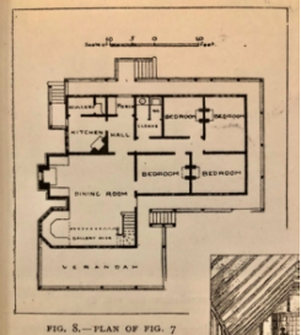
Bungalows, yes bungalows in an art book? Volume 3 (20-24). It is contrasted with ‘house’ here. It is cheap, can be built of wood, and can be built in the countryside as a “breath of fresh air” from the city. But alas, they too become rather grand, with one at Northwood “as a bachelor’s summer residence having drawing rooms, servant’s offices and four bedrooms and a bath.” Estimated cost, 300 British pounds. Still, sounds like a bargain to me!
The same volume has a cool discussion of painting different kinds of clouds (PS, there are 10 kinds)
Trees. Canadians love trees. At least the Group of Seven and their followers loved trees. So how deep does the tree-hugger insight go? Try Volume 13, 1898, 143-152. The Studio suggests there are forerunners to impressionists who enjoyed trees. One of them is Henri Harpignies, (1819-1816) a French landscape artist and member of the Barbizon school, who is said to have “opened up the way for impressionism.” He is lauded for going directly to Nature. He has “altered Nature, as Turner did, to suit his own purposes, correcting her disorders and errors (sic!) adding or suppressing, enlarging or diminishing, painting an object near or far off, so that if we were to stand upon the spot where he has placed his camp stool we should see before us the elements only of which he has made use.” Sounds much like our painters!
The same volume has a cool discussion of painting different kinds of clouds (PS, there are 10 kinds)
Trees. Canadians love trees. At least the Group of Seven and their followers loved trees. So how deep does the tree-hugger insight go? Try Volume 13, 1898, 143-152. The Studio suggests there are forerunners to impressionists who enjoyed trees. One of them is Henri Harpignies, (1819-1816) a French landscape artist and member of the Barbizon school, who is said to have “opened up the way for impressionism.” He is lauded for going directly to Nature. He has “altered Nature, as Turner did, to suit his own purposes, correcting her disorders and errors (sic!) adding or suppressing, enlarging or diminishing, painting an object near or far off, so that if we were to stand upon the spot where he has placed his camp stool we should see before us the elements only of which he has made use.” Sounds much like our painters!
Or Volume 80, 1920, 175-180. The Flower Sculptors of China. In our day, green jade figures are widely prized, but there are major Chinese traditions of artisans who carve exquisite pieces in a variety of coloured stone. “The Chinese prefer—though it sounds somewhat paradoxical—every white jade that has no colour and is of a size large enough to give the carver an opportunity of giving form to his ideal conceptions.“ Imagine having a stone with two or more colours and fashioning this into a gorgeous magnolia of a startlingly beautiful white flower surrounded by leaves of brilliant red carnelian. Such skill is prized more than the rather conventional green jade piece, which tends to be mass-produced for the popular market. I don’t know about you, but I shall never look at green jade carvings quite the same way again…
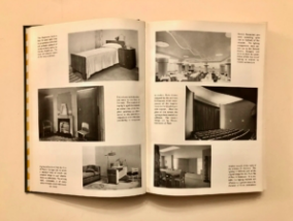
Want something practical? Like the best in fireplaces? New lighting? That’s right, both in a magazine of art! The Studio really has you covered! Volume 106, pp.53-63. Fireplace: A labour-saving rustless steel grate, interior with black marble slips, all surrounded by lined and waxed oak! Mantels are the big thing….they just radiate out and out….On lighting, I recognize grandma’s chromium-plated indirect lamp. It looks like a narrow bowl of chrome sitting on top of a long tube and the base has a circle of plate glass over the chrome base to keep junior from scratching it with his pedal-car! In the same volume, there’s even a section of great British design of cars! I kid you not!
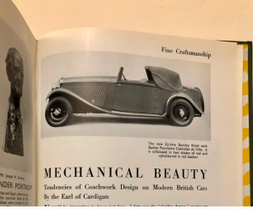
Entitled Mechanical Beauty, (pp.353-356), it states that there is no need to stream-line cars, “since the average man (!) does not indulge in very high speeds—40 to 50 m.p.h. being still regarded as a reasonable cruising speed for any coachbuilder to promote…”(p.353) I wonder what the writer would say today on the Queen E? The editor decries “fins” as if people want cars to be stabilized by the wind! Heaven forbid! There is even one designed by a fashion creator.
Check out the Studio Talk in Volume 64, 1915, 209-212. “Canadian art is undergoing a great change, a renaissance almost. …a younger generation is coming to the fore, trained partly in Canada, believing in and understanding Canada, and at least to some extent encouraged by Canadians.” The author cites, A. Y. Jackson’s The Red Maple, Winter Morning by Lawren Harris, and a study by Albert Robinson, entitled Evening Lights, all recently purchased by the National Gallery of Canada. The author, Erin Brown (Director of the National Gallery)writes: “It may seem almost unbelievable to people in England that, within an hour or two’s railway journey from Ottawa and almost within sight of it, lies a thinly inhabited land where the lakes teem with fish and the woods with wild animals, where in the autumn the scarlet maples blaze among the dark pines, and the winter wolves tear down the deer.” Frankly it is hard now for Canadians, scarcely more than a hundred years hence, to conceive of such a place. Of course, the Gallery had also purchased works by Goya, Monet and Millet, the latter piece having been rejected by the Salon, and he over-painted with a peasant life scene.
November 1, 2019
Dr. Earle Waugh, Volunteer
Dr. Earle Waugh, Volunteer
There is cool stuff at RiverBrink: Part XVI
Lights! Camera! Action! Niagara’s other Power
Lights! Camera! Action! Niagara’s other Power
With a logo of an Indigenous warrior powering a canoe up river, electricity was Niagara’s other legacy. Apart from its drawing power for tourism, Niagara was the dream project for engineers…with a drop of the river of over 300 feet, and more than 200,000 cubic feet of water per second, investors immediately saw industries and commercial enterprises eager to use the energy. RiverBrink has a delightful, rare, little pamphlet, published in 1913 by the Niagara Falls Power Company and simultaneously by the Canadian affiliate, the Canadian Niagara Power Company. It summarizes the structural components. It indicates that the energy developed from the turbines is controlled by one man in the main switchboard gallery. The Canadian plant has about double the capacity of the American. Interesting, too, that the first tunnel began in 1890 and by 1910, all machines were in operation. The pamphlet points out that the amount of coal it had saved up to 1913 was 1,800,000 tons. The conclusion: Niagara Falls has given us scads of ecologically-positive energy. (See The Niagara Falls Power Company, New York & Toronto, 1913.)
October 5, 2019
Dr. Earle Waugh, Volunteer
Dr. Earle Waugh, Volunteer
There is cool stuff at RiverBrink: Part XV
Exceptionally Cool – Rare Art Books at Riverbrink On Art Wars
Exceptionally Cool – Rare Art Books at Riverbrink On Art Wars
|
Oh my goodness! War in the Art World! Great Art to the Grotesque, by Kenneth Forbes, longtime docent of the Ontario Society of Artists who resigned in disgust at those who championed the “abstractions and distortions” of modern art. Toronto-born, he served in the First World War and was a championship amateur boxer. As artist he focused on portraits and landscapes…both with long pedigrees, and his disdain for modernist trends was personal and vivid. He saw abstract art as a plot engineered by profiteers. Picasso’s Seated Woman is described as a “ridiculous conglomeration of shapes and squiggles.” Alas, writes Forbes, “this freak occupies wall space while masterpieces are relegated to the cellar.” For sure Sam liked portraiture, as evidenced in his collection, and indeed favoured landscapes, but the odd modernist is found in his collection. Which troops did he line up with?
|
Banting as Group of Seven?
Heard of Frederick Banting? Well, of course Banting was one of Canada’s greats! A book authored by none other than A.Y. Jackson, Banting as an Artist, (Toronto: Ryerson, 1943). His development of insulin sealed his name for all time, but it is certainly rare to have him referred to as an artist. According to Jackson, Banting was upset by the Group of Seven’s art:
Heard of Frederick Banting? Well, of course Banting was one of Canada’s greats! A book authored by none other than A.Y. Jackson, Banting as an Artist, (Toronto: Ryerson, 1943). His development of insulin sealed his name for all time, but it is certainly rare to have him referred to as an artist. According to Jackson, Banting was upset by the Group of Seven’s art:
“The Group of Seven were a disturbing element at that time…A big Lake Superior canvas by Lawren Harris upset Banting so much that he went to the art gallery six times to see it. It made him angry.” Yet, as you look through the book, it is plain that his own canvases were influenced significantly by the Seven’s perspectives. His entire production takes up six pages in the little volume, testimony to his dedication to artistic expression. That Jackson created the little book indicates something very special about Banting and the famous Canadian group.
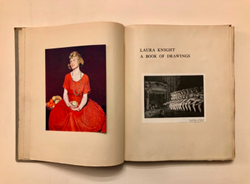
The Brilliance of a Woman Painting Women
How to catch the personality, the quality, the intimate understanding and insight into the character of women? We have Mona Lisa, yes, but take a look at Laura Knight: A Book of Drawings. (by Charles Marriot) London, England, John Lane The Bodley Head Society Limited. Born in 1877, she was exhibited in the Royal Academy in England in 1903. She is the first woman to paint a woman nude, and her work is stunning. In addition, her vision was amazingly diverse, from countryside landscapes, to peasant women, to boxers in the ring to portraiture (see her head of the ballerina Pavlova- it’s extraordinary), to renditions of cups and saucers. Her self-portraits are revealing and easily place her solidly within the impressionistic movement in England. Even her pen and pencil sketches in a café are revealing…she had an eye for the excitement of movement at the moment. Furthermore, her work is not without humour—at the zoo she drew polar bears, one peering at the hurried congregating of humans out side the bars, as if the bears were the ones staring at captive onlookers. The book is a rare one…#14 of 500 produced, and signed by the artist. A fascinating piece in Riverbrink library!
How to catch the personality, the quality, the intimate understanding and insight into the character of women? We have Mona Lisa, yes, but take a look at Laura Knight: A Book of Drawings. (by Charles Marriot) London, England, John Lane The Bodley Head Society Limited. Born in 1877, she was exhibited in the Royal Academy in England in 1903. She is the first woman to paint a woman nude, and her work is stunning. In addition, her vision was amazingly diverse, from countryside landscapes, to peasant women, to boxers in the ring to portraiture (see her head of the ballerina Pavlova- it’s extraordinary), to renditions of cups and saucers. Her self-portraits are revealing and easily place her solidly within the impressionistic movement in England. Even her pen and pencil sketches in a café are revealing…she had an eye for the excitement of movement at the moment. Furthermore, her work is not without humour—at the zoo she drew polar bears, one peering at the hurried congregating of humans out side the bars, as if the bears were the ones staring at captive onlookers. The book is a rare one…#14 of 500 produced, and signed by the artist. A fascinating piece in Riverbrink library!
A Glimpse of Old Montreal
I know, it’s really not an art book, but nevertheless, look up Hochelaga Depicta, on the present State of the City and Island of Montreal. (Montreal, 1839) It has some wonderful sketches of buildings and environs of our favourite place. Amazingly diverse religious buildings, from the Priest’s Farm to the Scotch Recession Chapel and my personal best, the City of Montreal from the Mountain revealing just how much the city has gobbled up the surrounding territory today. An added bonus is an interesting discussion of the Voyages of Lief and Biorn from Iceland and Greenland who were reputed to have made trips up the St. Lawrence and called the country Helluland. Our Newfoundland was entitled as Estotiland, Nova Scotia and New England called Drogeo. All much conjecture enriched by the vigor with which the Montreal area grew. All of which adds to the glamour of the place.
August 1, 2019
Dr. Earle Waugh, Volunteer
Dr. Earle Waugh, Volunteer
There is cool stuff at RiverBrink: Part XIV
Seneca Love Literature: Niagara’s Rainbow-The White Canoe Legend
Seneca Love Literature: Niagara’s Rainbow-The White Canoe Legend
Heard of Wenonah’s White Canoe? A Beautiful Story!
Imagine a famine and illness so profound that the whole tribe is dying. Imagine the distraught chief, calling all the wise to council…What must be done to save us, for we are slowly perishing? “The Water God of the Falls must be placated with the gift of the band’s most beautiful maiden,” came the reply. The chief’s stunning daughter proclaims she is ready; amid the wails and remonstrations are those of the Chief and Wenonah’s young warrior love, Uncas.
Imagine a famine and illness so profound that the whole tribe is dying. Imagine the distraught chief, calling all the wise to council…What must be done to save us, for we are slowly perishing? “The Water God of the Falls must be placated with the gift of the band’s most beautiful maiden,” came the reply. The chief’s stunning daughter proclaims she is ready; amid the wails and remonstrations are those of the Chief and Wenonah’s young warrior love, Uncas.
|
A white canoe, filled with flowers and fruit, embraces her and she sails resolutely toward the roaring precipice. The tribe looks on with hope, but Uncas cannot bear this loss; he launches into the racing waters and grasps her to himself as they hurtle over the rim. Above their watery grave arises a beautiful rainbow of acceptance; it remains there to this day. RiverBrink has a rare, illustrated edition: Willard Parker, illustrations by Mary Muse Fletcher, Niagara’s Rainbow, The Legend of the White Canoe, Willard Parker Publishing Co, Conshohocken, PA. 1922.
|
July 5, 2019
Dr. Earle Waugh, Volunteer
Dr. Earle Waugh, Volunteer
There is cool stuff at RiverBrink: Part XIII
Old & Odd, eh?
Old & Odd, eh?

Our oldest book? As in really, really old! And really, really odd! Description generale de l’Amerique was published in Paris in 1537! Amazing that so soon after Christopher Columbus’ trip of 1492, that is 45 years, so much could be said!! Of course, much of it was nonsense, but it was interesting nonsense, saying more about what the king of France wanted to hear than absolute fact. Could this be the first example of fake news? For example, the people of Brazil “ have no temples, no religion, no deities, no idols, and no activities that could be said to take the form of religion, neither in public nor in private.” No less an authority than Plato validates the Atlantic territory. All this was written by Pierre D’Avitt, who was “Lord of Montmartin and Gentleman of the King’s Chamber.“ Riverbrink’s copy has a map completed in 1613 in the front, that shows Canada as a tiny point of land near what is now Newfoundland, (Perhaps so we don’t get too big a head!) and all lying within the Land of New France, itself which reaches to the Appalachian mountains in the US. Canada, you’ve come a long way, baby!
June 14, 2019
Dr. Earle Waugh, Volunteer
Dr. Earle Waugh, Volunteer
There is cool stuff at RiverBrink: Part XII
Debating the World with a Huron Intellectual, Adario
Debating the World with a Huron Intellectual, Adario
Baron de Lahontan, graced with good and rich connections, travelled to several countries, including America, Portugal and Denmark, and in the late 1600’s, wrote of his experiences. His book, however, puts front and centre his encounter with a native philosopher to whom he gives the name Adario. Actually Adario comes off looking less ‘savage’ in some ways than the Baron’s countrymen. Check out Dialogues De Monsieur le Baron de Lahontan et d’un Sauvage dans L’Amerique. Amsterdam, 1704. The Huron and the Baron are on great terms…’my dear brother’…is sprinkled liberally through the section, and clearly the Huron is equal to the Baron in intellectual vigor and perspective. As we might know, the “dialogue” starts off with religion, and the supposed absence of God among the “savages”. Adario sets him straight on that, as he does on law and how to treat women-folks. Do you suppose the good Baron was overcome by the nobility of this “savage”
May 31, 2019
Dr. Earle Waugh, Volunteer
Dr. Earle Waugh, Volunteer
There is cool stuff at RiverBrink: Part XI
Canada, Eh?
Canada, Eh?

Quick now, Who is Thomas C. Halliburton? Well he’s a kind of 1800’s writer …like Margaret Atwood…he made a big splash south of the border…and that back when Americans were still a tad sore from 1812 and all! (Fact is, he’s listed as an American writer!)
Know Sam Slick? He was an itinerant clockmaker in Halifax whose homespun, jovial eloquence set everyone to knee-slapping laughter. Problem is, Halliburton was no clockmaker–he was actually a Nova Scotia judge and parliamentarian. Sam was his creation, arising out of comical life and folks in Halifax. Americans loved Sam. Riverbrink has several rare copies of Sam’s stuff, including simultaneous publications of 1837 and 1838 in both London, England and Philadelphia, Pennsylvania. (The Clockmaker: or the Sayings and Doings of Samuel Slick of Slickville. Philadelphia: 1837) Don’t know what “Blowin’ Time“ is? Better check out Sam. He thinks some places do better at blowin’ time than others. Guess which?
P.S. Riverbrink has Halliburton’s whole collection of humor, published in England…18 volumes. Makes you wonder when he ever got any judging done
Know Sam Slick? He was an itinerant clockmaker in Halifax whose homespun, jovial eloquence set everyone to knee-slapping laughter. Problem is, Halliburton was no clockmaker–he was actually a Nova Scotia judge and parliamentarian. Sam was his creation, arising out of comical life and folks in Halifax. Americans loved Sam. Riverbrink has several rare copies of Sam’s stuff, including simultaneous publications of 1837 and 1838 in both London, England and Philadelphia, Pennsylvania. (The Clockmaker: or the Sayings and Doings of Samuel Slick of Slickville. Philadelphia: 1837) Don’t know what “Blowin’ Time“ is? Better check out Sam. He thinks some places do better at blowin’ time than others. Guess which?
P.S. Riverbrink has Halliburton’s whole collection of humor, published in England…18 volumes. Makes you wonder when he ever got any judging done
May 24, 2019
Dr. Earle Waugh, Volunteer
Dr. Earle Waugh, Volunteer
There is cool stuff at RiverBrink: Part X
Niagara Geology, 1872 Variety
Niagara Geology, 1872 Variety
Ok science geeks, why did the Falls fall at all? Sam Weir must have wondered, so he bought a book about it. George Holley, Niagara: History and Geology, (New York, Sheldon & Co, 1872). It is a really cool book. George says there are strata, eight in all, which aided and abetted the whole process of forming the Falls…compact limestone, soft shale, compact grey limestone, mottled sandstone, red shale, grey sandstone, then shaly sandstone and marl (p.54)…check your backyard, it probably has an admixture of this for your grapes to grow! Needless to say, this all turned to mush when the water came rushing down…so beginning at Lewiston/Fort George, it carved back and back and back…you get the picture. Incidentally, George thinks the best time to see the Falls is in winter. He rhapsodizes: “Exceedingly beautiful are the white vestments of frozen spray with which every thing in the vicinity is robed and shielded; and beautiful too are the clusters of ice apples (I kid you not, Ed.) which tip the extremities of the branches of the evergreen trees.” Almost enough to make you get out your galoshes out again! Visit the exhibition on the main floor at RiverBrink for a reminder of the beauty of the falls in winter!
While we are on Geography--
What geography did our great, great, great grandparents study in school? Well, to use modern jargon, we have an app for that…a book app! Colton & Fitch, Modern School Geography. New York, Ivision, Blakeman, Taylor, 1870. George Fitch actually wrote it, and George Colton (What is it about the name George and geography? Ed.) The second one did the maps to scale. The whole world is here, with emphasis on the United States, and the northern part of the continent is “British Possession” (that’s us…we get 4 pages out of 134, the same as the British Isles!).
According to this, there are more people living in Boston than the whole of Canada. I can also tell you that Lesson XV would not pass today. It is on Races and Conditions of Men with some really grim talk about savage, barbarous, half-civilized and civilized states. A note at the bottom opines: “The degree of civilization to which a nation has arrived, can generally be estimated by the social position of women.” Hmmm, 1870 eh?
While we are on Geography--
What geography did our great, great, great grandparents study in school? Well, to use modern jargon, we have an app for that…a book app! Colton & Fitch, Modern School Geography. New York, Ivision, Blakeman, Taylor, 1870. George Fitch actually wrote it, and George Colton (What is it about the name George and geography? Ed.) The second one did the maps to scale. The whole world is here, with emphasis on the United States, and the northern part of the continent is “British Possession” (that’s us…we get 4 pages out of 134, the same as the British Isles!).
According to this, there are more people living in Boston than the whole of Canada. I can also tell you that Lesson XV would not pass today. It is on Races and Conditions of Men with some really grim talk about savage, barbarous, half-civilized and civilized states. A note at the bottom opines: “The degree of civilization to which a nation has arrived, can generally be estimated by the social position of women.” Hmmm, 1870 eh?
April 26, 2019
Dr. Earle Waugh, Volunteer
Dr. Earle Waugh, Volunteer
There is cool stuff at RiverBrink: Part IX
More Oddities at Riverbrink: The French King’s Envoy, Riswik’s Report
More Oddities at Riverbrink: The French King’s Envoy, Riswik’s Report

How’s your handwriting? Not so good eh? Think if you were required by the king of France to give a summary of the various places where the king had sent ambassadors before the era of computers. Well we have such a book! It is amazing. Written in beautiful style, it summarizes for the King the state of the King’s interests, especially in commerce and transportation in America (extensive!) but also in places as remote as the Red Sea and Egypt from the year 1697 and 1698! It is here. It is Memoir de Riswik, hand-written and published in 277 pages, presumably in 1699 or 1700. It lauds the Dutch and castigates the English (naturally) but also includes some of the entanglements that the king has to face from the English and the Iroquois joining forces. It sketches the state of affairs when the peace treaty was finally signed with the English. It is a fascinating piece of history!
April 17, 2019
Dr. Earle Waugh, Volunteer
Dr. Earle Waugh, Volunteer
There is cool stuff at RiverBrink: Part VIII
The Brilliance of a Woman Painting Women
The Brilliance of a Woman Painting Women
How to catch the personality, the quality, the intimate understanding and insight into the character of women? We have Mona Lisa, yes, but take a look at Laura Knight: A Book of Drawings. (by Charles Marriot) London, England, John Lane The Bodley Head Society Limited. (1923) . Born in 1877, Knight exhibited in the Royal Academy in England in 1903. Her work is stunning. In addition, her vision was amazingly diverse, from countryside landscapes, to peasant women, to boxers in the ring to portraiture (see her head of the ballerina Pavlova- it’s extraordinary), to renditions of cups and saucers. Her self-portraits are revealing and easily place her solidly within the impressionist movement in England. Even her pen and pencil sketches in a café are revealing…she had an eye for the excitement of movement. Furthermore, her work is not without humour—at the zoo she drew polar bears, one peering at the hurried congregating of humans outside the bars, as if the bears were the ones staring at captive onlookers. The book is a rare one…#14 of 500 produced, and signed by the artist. A fascinating piece in RiverBrink library! You can also see one of her drawings, Two Stabled Rosinbacks, in the exhibition Menagerie.
April 12, 2019
Dr. Earle Waugh, Volunteer
Dr. Earle Waugh, Volunteer
There is cool stuff at RiverBrink: Part VII
Gardener’s Advice
Gardener’s Advice
Hear Ye! Hear Ye! All ye gardeners! Before ye put a spade to earth, read Jean de la Quintinie’s advice to the French king: “The Compleat Gard’ner: Directions for Cultivating and the Right Ordering of Fruit-Gardens and Kitchen-Gardens” , dated 1693. 204 pages plus! De la Quintinie argues that he will return to wisdom derived from the first garden (that’s right, the Garden of Eden!) and will tell where and how to place plants relying on the notions that the first plants were fruits and kitchen-garden plants (vegetables). Flowers come later apparently, introduced by those meddlers who changed the proper order coming out of Adam’s garden! And a special note for vintners…grapes were to be planted next to walls! There were two varieties of grapes: early or forward (he calls them a ‘sort of Black Merillion”- the early has tough skin and ripens in July, (but looks ripe long before it is!). How to plant? Here it is: “For four hundred and fourscore fathoms of fruit-walling, those toward the south we will fill them up with 15 foot of White, and 3 of Red Muscat, 9 of Chassela’s and 6 of Corinthian grapes.” PS, He liked Chassela’s best, even though it was poorer in volume. And a final word to gard’ners: Forget the old wisdom of planting, cutting or grafting during the proper phase of the moon (this despite his concern to use original ideas from the first garden!) “And that after all, I find that all this is no more than the Old Sayings of some Inexperienced and Ignorant Gard’ners, who designed thereby to cover their own ignorance, and hoped to be remember’d for such Jargon among such as know nothing at all of Husbandry” (italics in original) Oh dear. Best to forget the moon and just get on with it!
March 2, 2019
Dr. Earle Waugh, Volunteer
Dr. Earle Waugh, Volunteer
There is cool stuff at RiverBrink: Part VI
Niagara on Steroid
Niagara on Steroid
|
Back in the day, the region was hot… press-wise that is. It was the Trump or Brexit story…no editor would be without it if they wanted to sell type. Judging from Riverbrink’s old books, Sam Weir was into that. Right up front, Niagara was the go-to place for the rich set, so we have some stellar early travel books.
John Maude published his tour guide in 1826 in London after he had toured Niagara from New York in 1800 entitled Visit to the Falls of Niagara. So impressed was he that he paraphrased Bruce’s famous line after visiting the source of the Nile, “I drank, on my knees and hands, I drank of the Falls of Niagara.” He gives the best place to stand to see the Falls in all their greatness: Table Rock. |
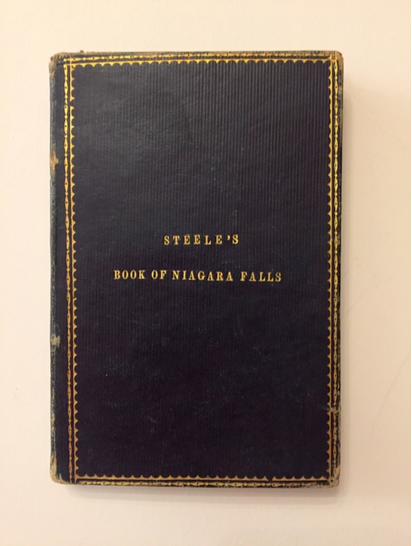
Or consider Steele’s Book of Niagara Falls. Published in Buffalo in 1840, this collection was originally put together by H.A.Parsons for the market of wealthy travellers (“This book aims to be far superior to anything else available”—modest he wasn’t) and it surveys some the earlier travellers’ comments, like Fr. Hennepin, of 1678. Hennepin had stressed that there were three falls, and in the region there were three mountains and a great rock. Puzzling. Could a man of the cloth be seeing things? No mountains are anywhere round these parts. He also thought the falls were around “600 feet high.” More accurate measurements had it to be 126 feet! Makes you wonder what kind of coffee he had for breakfast. Or the line by a woman visitor: “Flow on forever in thy glorious robe/ Of terror and beauty…/and He doth give/ The voice of thunder!” The moon launch comment of the day!
Hard on its heels came Captain Johnson’s Guide to Niagara Falls and its Scenery. New York, 1842 (“The only original, correct and reliable work in market”). This because Johnson was captain of the original Maid of the Mist—no doubt a local authority. It contains the amazing story of Mordecai M. Noah, a kind of hero of Goat Island. He bought part of Grand Island as a “future home of all Jews on the globe…a second city of Jerusalem!” It was to be funded by a 33% duty for visitors. One can see why the religious might be moved. Johnson said it was “impossible to be an atheist” after visiting the falls.
Hard on its heels came Captain Johnson’s Guide to Niagara Falls and its Scenery. New York, 1842 (“The only original, correct and reliable work in market”). This because Johnson was captain of the original Maid of the Mist—no doubt a local authority. It contains the amazing story of Mordecai M. Noah, a kind of hero of Goat Island. He bought part of Grand Island as a “future home of all Jews on the globe…a second city of Jerusalem!” It was to be funded by a 33% duty for visitors. One can see why the religious might be moved. Johnson said it was “impossible to be an atheist” after visiting the falls.
After a while more discerning visitors wanted something more than anecdotes. A chap named Peter A. Porter, a member of NY state legislature, who was one of those who proposed a tunnel for Niagara Power, put his pen to paper. His The Niagara Region in History documents how, in 1764 the British commander William Johnson had brought together 2000 warriors, mostly Senecas and secured from them a strip of land 4 miles wide on each side of the river for 36 miles, including islands so that the Niagara could ”be preserved free from all humankind.” He has a fascinating discussion of the original of the name. According to him, Fr. L’Allement, French priest, came as missionary to the area in 1641 and found an independent tribal nation here, sitting between the Senecas in the west and the Iroquois in the east. They called themselves, and the river Onguiaahra. By 1643 they were attached on both sides and were wiped out, with the remnants being incorporated into the Senecas. The Senecas spoke an Iroquoian dialect and they referred to the river by a modification of the original name of the defeated tribe, Nyah-ga-rah, which may mean either “thunder of the waters or neck of the waters”. The emphasis is on the second syllable, so Ni-a-gA-ra. The name we have is a modification of the French version by the missionaries. By 1657 the falls were called Ongiara Sault, with the ‘Falls’ designation going to Fr. Le Clerq in 1691. Hennepin used the modern spelling of Niagara Falls.
Finally, picture books, or if you prefer, coffee table books. These were inevitable, given the fame of the region. Riverbrink has a lovely one, J. Murray Jordan, Niagara in Summer and Winter. New York, 1904. Want proof of global warming…take a look at the camps and souvenir shanties out on the frozen Niagara below the Falls in the 1800’s! Ice bridges and all. Impressive. And impossible today!
January 24, 2019
Dr. Earle Waugh, Volunteer
Dr. Earle Waugh, Volunteer
There is cool stuff at RiverBrink: Part V
Where are the Palatine Hills in NOTL?
Where are the Palatine Hills in NOTL?
|
Visitors to Old town, Niagara-on-the-Lake may pass a vineyard with the alluring name of Palatine
Hills Winery and wonder where these hills might be. Well, er, not nearby! Actually the Palatine are the seven hills on which the ancient city of Rome was built and became the foundation of the imperial government of the Roman Empire. The hills eventually were symbolic of universal European and ultimately Western civilization. The moniker, however, has accumulated other nuances. Palatinate is the name applied to two regions in western Germany; it was originally a title conferred widely in Europe beginning at the time of the Holy Roman Empire; (Emperor Frederick I first conferred it on his half-brother—but that’s another story!). It was applied to lands on either side of the southern Rhine River, lands that became famous for rich agricultural produce and eventually wine. What’s RiverBrink’s connection? The library features a rare book titled, The Story of the Palatines: An episode in Colonial History (by H S. Cobb). It traces a major influx of Westphalian Germans who settled throughout the developing America and became known, in one area, as the Pennsylvanian Dutch. The book dates to 1897. Some of these migrants moved north with Loyalists. Sorry, there is no evidence NOTL has a better connection to Palatine Hills than good wine! |
December 13, 2018
Dr. Earle Waugh, Volunteer
Dr. Earle Waugh, Volunteer
There’s Cool Stuff at RiverBrink: Part IV
Rare Indeed: Imagining Canada & Canadian Women: Maria Chapdelaine
Rare Indeed: Imagining Canada & Canadian Women: Maria Chapdelaine
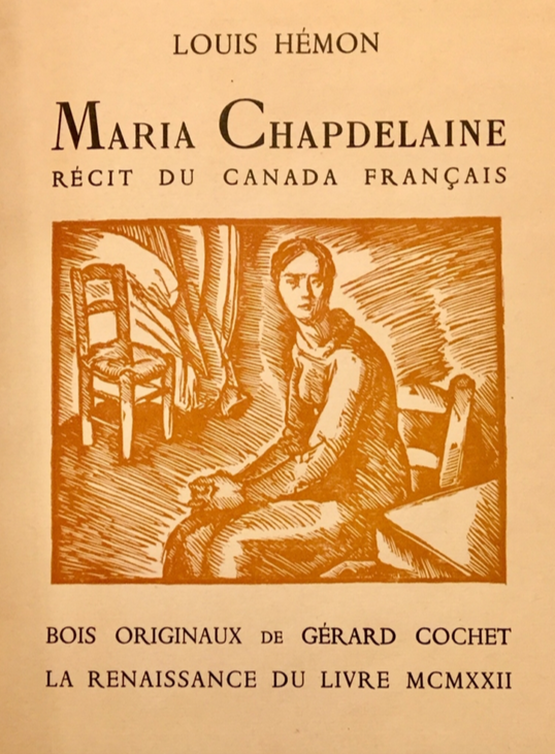
A romance novel written in 1913 by the French author Louis Hémon, Maria Chapdelaine stands out as the image of nascent French Canada. Through the character of Maria, the author portrays the cultural world of turn-of the-century rural Québec. In contrast to the loads of paper on early male colonists, Maria is a rare female heroine. But she is also a controversial figure, because the book was penned by a foreigner. (What’s he know about us? He makes us too country-bumpkin!) In the story, set in the Lac St. Jean region of Québec, Maria choses the rough life of Canada over the fleshpots of Boston! Ah the pur laine joyous Canadian spirit! Weir’s collection contains several versions of the book including one of the earliest Canadian publications from 1916, illustrated by Marc-Aurèle de Foy Suzor-Coté.
There is also a lovely commemorative edition of 1922 with woodcuts by Gérard Cochet, a splendid 1927 Paris edition with 25 impressive lithographs by Alexander Alexeieff, a 1933 edition, beautifully illustrated by Clarence Gagnon, and a 1939 Paris-produced edition illustrated in colour by Eugène Corneau. Out of nine illustrated editions, RiverBrink has five, including one in English illustrated by Thoreau MacDonald.
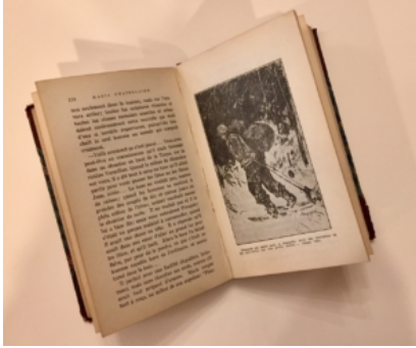
Distinctive imaginings of Canada! This from Louis Hémon, quiet, lone wolf, pensive French journalist and his Paris colleagues! Think maybe this says more about Paris than Montreal? Still, a great early read, and certainly an iconic woman of Canlit. You can enjoy the books in the company of bronze sculptures depicting characters in the book, including Maria, by Suzor-Coté
November 2, 2018
Dr. Earle Waugh, Volunteer
Dr. Earle Waugh, Volunteer
There’s Cool Stuff at RiverBrink: Part III
Books in Indigenous Languages
Books in Indigenous Languages
Europeans quickly forgot their Indigenous allies of the War of 1812-14, but their cultural impact is seen in the Weir collection. The library houses some rare gems of Indigenous languages. Joseph Brant, (yep, the Chief himself!) has some of his Christian translations here. Religious diversity (and conflict!) seems to be the norm: itinerant missionaries from Europe set out to convert the local peoples, and one of the tools they used was word lists/dictionaries. The library has two volumes published by the International Colportage Mission from 1903-07, A Concise Dictionary of the Ojibway Indian Language. Compiled for the Use of the Ojibway Indians (cost-60 cents!). There are four books written by Reverend Peter Jones, a Wesleyan Methodist and an Ojibway, including A collection of Ojebway and English hymns, for the use of the native Indians, published in Toronto in 1877. Ominously, Jones added three hymns “For Believers Fighting!” There is also an autobiography and his History of the Ojebway Indians; with especial reference to their conversion to Christianity (1861). The Weir collection also has a volume in Montagnais—a really exceptional book—Catholic mass, catechism and prayers translated by Jean-Baptiste La Brosse, published in Montreal in 1767 as Nehro-iriniui aiamihe massinahigan. (click here to view it online)
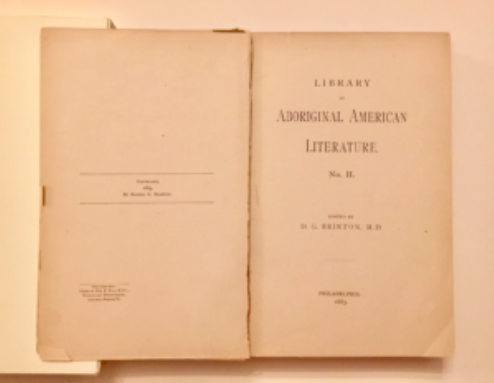
Because of the proximity to the Haldimand Tract, it stands to reason RiverBrink would have several books in Mohawk languages: Brant’s loyalties to the Church of England are reflected in his translation of The Book of Common Prayer and Administration of the Sacraments, with some translations from St. Mark’s Gospel, (London 1787), and perhaps The Gospel According to John in Mohawk, (1814) for which no translator is noted. Among the rare books is Abraham Nelles’ The Book of Common Prayer according to the use of the Church of England, translated into the Mohawk Language (Hamilton, 1842). Academics also got their dibs in before the old traditions were erased: Horatio Hale composed The Iroquois Book of Rites (Philadelphia, 1883) which contains Onondaga texts and rituals pre-dating Christian influence. Overall, the Weir Collection contains a diverse slice of the religious world experienced by the First Peoples in this region. Of course many of these books have been digitized and are available on line, but nothing beats the experience of the original.
October 24, 2018
Dr. Earle Waugh, Volunteer
There’s Cool Stuff at RiverBrink: Part II
As discussed in my previous blog, RiverBrink founder Samuel E. Weir collected many rare books.
Tucked away in gilded cages are real jewels…not the gold type, but the leafy type. Some of these pre-date your great-great-great grandparents; like imagine Francis Bacon toiling away in his cloister writing The History of the Reign of King Henry VII, King of England; (ps, how’s your Latin?), but then, just to get his money’s worth, he threw in his wisdom of the day, discussions on sacred stuff and a whole whack of sermons (59!). All of this published in London in 1638. Surprisingly, his Cases of Treason (1641) (Where a man doth clip, waste, round, or file any of the King’s money for gaines sake, it is treason.) is also here.
Want something older? How about Pierre D’Avitt’s General Description of America (ps how’s your French?) published in Paris in 1537. It’s la crème de la crème of RiverBrink’s oldies! Here you find both North and South America by French Mapmaker, P Bertiius, (Lake Ontario is a tiny squiggle!) and New France is far larger than Canada, which is tucked into the far corner of the Gaspé peninsula…not much there…both these get only 6 pages of description out of 187!
Be warned, there is some nonsense here: according to him, native people “sacrifice to the devil” to ensure good fortune in life!!! The oldest travel book is Samuel de Champlain’s little book, Voyages et Descouvertures Faites en Nouvelle France, depuis l’année 1615.(published in 1627); RiverBrink also has Champlain’s more impressive Les voyages de la Nouvelle France, Occidentale, dicte Canada, (1632). Among other things, Champlain startlingly concludes that the Chiefs have no authority over their soldiers in New France, — sounds like today’s politics section of the newpaper! In the 17th century, Fr. Barthelemy Vimont was head of the Jesuits in New France and penned Relations de ce qui s’est passé en la Nouvelle France és années 1644-1645 (Information on what occurred in New France from 1644-1645), published after he returned home in 1648. He was astonished that, at the conclusion of a meeting, all the tribes danced together: the Iroquois, the Algonquins, the Hurons, the Montangais, the Attikameges, along with the French-speaking attendees, since they did not always agree on everything. Finally, Sir Matthew Hale, chief justice of the King’s Bench, provides us with Contemplations Moral and Divine, (London, 1685), a book designed to affirm the ethical foundations of law in the English courts; today we might wonder at such meditations by a chief justice, but then English common law was based upon such common moral principles.
Rare Indeed!
Some real finds here, including Indigenous Language books,
Niagara’s Geology
Maria Chapdelaine
Peace & War History, (Fenian Raid, 1812 war, Queenston Heights, American Revolution)
Travel stuff in French
Immigrants and the Impact of Nature
Paul Kane’s Wanderings of an artist among the Indians of North America, Books on Canadian Scenery based on prints by William Bartlett, and Susannah Moodie’s Life in the Clearing vs Life in the Bush.
Neat Stories
The Story of the Palatines, An Episode in Colonial History
The Niagara Falls Power Company
The whole works of that excellent practical physician, Dr. Thomas Sydenham
Oddities
The Clockmaker: or The Sayings and Doings of Sam Slick, of Slickville
Art of the Grotesque by Kenneth Forbes
A Book of Ye Olde English Fayre
Dr. Earle Waugh, Volunteer
There’s Cool Stuff at RiverBrink: Part II
As discussed in my previous blog, RiverBrink founder Samuel E. Weir collected many rare books.
Tucked away in gilded cages are real jewels…not the gold type, but the leafy type. Some of these pre-date your great-great-great grandparents; like imagine Francis Bacon toiling away in his cloister writing The History of the Reign of King Henry VII, King of England; (ps, how’s your Latin?), but then, just to get his money’s worth, he threw in his wisdom of the day, discussions on sacred stuff and a whole whack of sermons (59!). All of this published in London in 1638. Surprisingly, his Cases of Treason (1641) (Where a man doth clip, waste, round, or file any of the King’s money for gaines sake, it is treason.) is also here.
Want something older? How about Pierre D’Avitt’s General Description of America (ps how’s your French?) published in Paris in 1537. It’s la crème de la crème of RiverBrink’s oldies! Here you find both North and South America by French Mapmaker, P Bertiius, (Lake Ontario is a tiny squiggle!) and New France is far larger than Canada, which is tucked into the far corner of the Gaspé peninsula…not much there…both these get only 6 pages of description out of 187!
Be warned, there is some nonsense here: according to him, native people “sacrifice to the devil” to ensure good fortune in life!!! The oldest travel book is Samuel de Champlain’s little book, Voyages et Descouvertures Faites en Nouvelle France, depuis l’année 1615.(published in 1627); RiverBrink also has Champlain’s more impressive Les voyages de la Nouvelle France, Occidentale, dicte Canada, (1632). Among other things, Champlain startlingly concludes that the Chiefs have no authority over their soldiers in New France, — sounds like today’s politics section of the newpaper! In the 17th century, Fr. Barthelemy Vimont was head of the Jesuits in New France and penned Relations de ce qui s’est passé en la Nouvelle France és années 1644-1645 (Information on what occurred in New France from 1644-1645), published after he returned home in 1648. He was astonished that, at the conclusion of a meeting, all the tribes danced together: the Iroquois, the Algonquins, the Hurons, the Montangais, the Attikameges, along with the French-speaking attendees, since they did not always agree on everything. Finally, Sir Matthew Hale, chief justice of the King’s Bench, provides us with Contemplations Moral and Divine, (London, 1685), a book designed to affirm the ethical foundations of law in the English courts; today we might wonder at such meditations by a chief justice, but then English common law was based upon such common moral principles.
Rare Indeed!
Some real finds here, including Indigenous Language books,
Niagara’s Geology
Maria Chapdelaine
Peace & War History, (Fenian Raid, 1812 war, Queenston Heights, American Revolution)
Travel stuff in French
Immigrants and the Impact of Nature
Paul Kane’s Wanderings of an artist among the Indians of North America, Books on Canadian Scenery based on prints by William Bartlett, and Susannah Moodie’s Life in the Clearing vs Life in the Bush.
Neat Stories
The Story of the Palatines, An Episode in Colonial History
The Niagara Falls Power Company
The whole works of that excellent practical physician, Dr. Thomas Sydenham
Oddities
The Clockmaker: or The Sayings and Doings of Sam Slick, of Slickville
Art of the Grotesque by Kenneth Forbes
A Book of Ye Olde English Fayre
October 11, 2018
Dr. Earle Waugh, Volunteer
There’s Cool Stuff at RiverBrink: Part I
For the past few weeks, volunteer Dr. Earle Waugh has been exploring the contents of the library at RiverBrink. In this series of blog posts, Earle describes his encounters with the collection:
Cool Stuff in the Library at RiverBrink Art Museum
Into painting and hankering to find out how it was done in the past?
Looking for an accurate photograph of your family home?
Want to sort out how militias blasted each other in the war of 1812?
Still skeptical that there is something called Canadian art?
Search no longer! Yep! BELIEVE IT! There is a splendid library at RiverBrink with books on a variety of subjects! Here is a taste of what you can find…
What’d our ancestors put on the wall?
Despite our differences, Canadians, Americans and Europeans all put similar-type paintings on the wall, so here are a few gems in the library that helps us figure why:
Ernest Lawson, American Impressionist, a painting tradition influenced by European Impressionists
George Caitlin and the Old Frontier, whose depiction of Indigenous peoples in the Western frontier fueled the colonialist notion of the “noble savage” that still can be found in Europe today. (Caitlin’s travels are all preserved in the rare books section…a treasure trove for sure!)
Or The Nude in Canadian Painting, demonstrating that Canadian artists also explored the nude as a subject.
These, along with a whole gaggle of books on the Group of Seven and their contemporaries, reflects artistic commonalities across international borders and stylistic tastes at different time periods. There are even books on art fraud (Look for the bookshelves to the right as you enter).
Many of the books were purchased by Samuel Weir, who had an interest in collecting rare books, in addition to his art collection.
What did he purchase? Oodles of stuff on history…he even has a complete set of Lord Campbell’s 1876 Lives of the Lord Chancellors and Chief Justices of England.—eleven impressive books that details who was put in jail and why under each of these gentlemen, eg “cock-fighting—a barbarous diversion, to be treated as illegal in a court of justice” (volume 4, 174). You can also find cool stuff that played a role in the development of law in Canada, but most of the collection relates to Canadian history…all the way from The Jesuit Relations from 1636 to Pierre Berton’s Flames across the Border. A personal favourite is Chisholm’s 1903 Dialogues on English History and The History of England in One Hundred Lines? How come we never had that short a version in school? (Look to the shelves on the left as you enter.)
Even something for the Antiques buff!
Interested in Treen and other wooden bygones, by Edward Pinto? Don’t know what a treen is? Tisk! Tisk! Pinto says it has to be made from carved wood, can’t be any larger than a loom and is for domestic use—like cups, chalices and the like. So those wooden wine glasses in the back of the cupboard are ‘treen’! A carved beer mug is a treen.
Then again, some people love old silver and Ramsay Traquair wrote a whole book about Quebec’s: The Old Silver of Quebec. Or perhaps you are into chairs. John Gloag certainly was into British chairs….likely he sat on one all his life! Anyway The Englishman’s Chair has everything you wanted to know about chairs made in England from the 15th to the 20th centuries.
Come to the library! You’ll learn that early Ontario had pugmills…what? you’ve never heard of a pugmill? Well a pugmill churned clay into a homogeneous mix. The churn was usually pulled by horses and they went round and round until the potter decided the clay was of the right texture. After it settled, it was cut into sections and used to make pottery or bricks or whatever. Take a look at David Newland’s Early Ontario Potters: The craft and trade. Next time you drop a flowerpot, remember maybe your ancestor ran a pugmill in Ontario!
Thundergate/ Niagara…facts (yes there are facts!) and other truths!
Seems like Niagara was always a cool spot. Indigenous peoples had reported on the thunder of stones tossed by the river, and of the roar of the falls that sound much like the voice of a deity. Speaking of deity, so overwhelmed was Fr. Hennepin, a Franciscan missionary in 1678 that he immediately set up his travelling altar and said mass! No surprise, then that Weir loved Niagara Falls and its areas. He collected far and wide on the falls and stories of its people… important depictions …paintings, photos, commentaries, the works. You can find many of them here. A sample? Samuel Adams’ General Brock and Niagara Falls; Adams, an American writer, noted: “The essential fact of the War of 1812, in which Isaac Brock played so heroic a part, is that in it the United States was not victorious…” Or maybe you prefer Andy O’Brien’s Daredevils of Niagara, yes, the story of barrel-riders, tight-rope walkers, whirlpool swimmers, you name it, they’ve all taken a crack at Niagara. The rest of us, including Weir, accept the grandeur and beauty of the place and revel in the people that have been drawn to it. (Check the books on Niagara of the low shelves to the left when you enter).
Indeed, many different subjects to pique the interest of visitors.
Dr. Earle Waugh, Volunteer
There’s Cool Stuff at RiverBrink: Part I
For the past few weeks, volunteer Dr. Earle Waugh has been exploring the contents of the library at RiverBrink. In this series of blog posts, Earle describes his encounters with the collection:
Cool Stuff in the Library at RiverBrink Art Museum
Into painting and hankering to find out how it was done in the past?
Looking for an accurate photograph of your family home?
Want to sort out how militias blasted each other in the war of 1812?
Still skeptical that there is something called Canadian art?
Search no longer! Yep! BELIEVE IT! There is a splendid library at RiverBrink with books on a variety of subjects! Here is a taste of what you can find…
What’d our ancestors put on the wall?
Despite our differences, Canadians, Americans and Europeans all put similar-type paintings on the wall, so here are a few gems in the library that helps us figure why:
Ernest Lawson, American Impressionist, a painting tradition influenced by European Impressionists
George Caitlin and the Old Frontier, whose depiction of Indigenous peoples in the Western frontier fueled the colonialist notion of the “noble savage” that still can be found in Europe today. (Caitlin’s travels are all preserved in the rare books section…a treasure trove for sure!)
Or The Nude in Canadian Painting, demonstrating that Canadian artists also explored the nude as a subject.
These, along with a whole gaggle of books on the Group of Seven and their contemporaries, reflects artistic commonalities across international borders and stylistic tastes at different time periods. There are even books on art fraud (Look for the bookshelves to the right as you enter).
Many of the books were purchased by Samuel Weir, who had an interest in collecting rare books, in addition to his art collection.
What did he purchase? Oodles of stuff on history…he even has a complete set of Lord Campbell’s 1876 Lives of the Lord Chancellors and Chief Justices of England.—eleven impressive books that details who was put in jail and why under each of these gentlemen, eg “cock-fighting—a barbarous diversion, to be treated as illegal in a court of justice” (volume 4, 174). You can also find cool stuff that played a role in the development of law in Canada, but most of the collection relates to Canadian history…all the way from The Jesuit Relations from 1636 to Pierre Berton’s Flames across the Border. A personal favourite is Chisholm’s 1903 Dialogues on English History and The History of England in One Hundred Lines? How come we never had that short a version in school? (Look to the shelves on the left as you enter.)
Even something for the Antiques buff!
Interested in Treen and other wooden bygones, by Edward Pinto? Don’t know what a treen is? Tisk! Tisk! Pinto says it has to be made from carved wood, can’t be any larger than a loom and is for domestic use—like cups, chalices and the like. So those wooden wine glasses in the back of the cupboard are ‘treen’! A carved beer mug is a treen.
Then again, some people love old silver and Ramsay Traquair wrote a whole book about Quebec’s: The Old Silver of Quebec. Or perhaps you are into chairs. John Gloag certainly was into British chairs….likely he sat on one all his life! Anyway The Englishman’s Chair has everything you wanted to know about chairs made in England from the 15th to the 20th centuries.
Come to the library! You’ll learn that early Ontario had pugmills…what? you’ve never heard of a pugmill? Well a pugmill churned clay into a homogeneous mix. The churn was usually pulled by horses and they went round and round until the potter decided the clay was of the right texture. After it settled, it was cut into sections and used to make pottery or bricks or whatever. Take a look at David Newland’s Early Ontario Potters: The craft and trade. Next time you drop a flowerpot, remember maybe your ancestor ran a pugmill in Ontario!
Thundergate/ Niagara…facts (yes there are facts!) and other truths!
Seems like Niagara was always a cool spot. Indigenous peoples had reported on the thunder of stones tossed by the river, and of the roar of the falls that sound much like the voice of a deity. Speaking of deity, so overwhelmed was Fr. Hennepin, a Franciscan missionary in 1678 that he immediately set up his travelling altar and said mass! No surprise, then that Weir loved Niagara Falls and its areas. He collected far and wide on the falls and stories of its people… important depictions …paintings, photos, commentaries, the works. You can find many of them here. A sample? Samuel Adams’ General Brock and Niagara Falls; Adams, an American writer, noted: “The essential fact of the War of 1812, in which Isaac Brock played so heroic a part, is that in it the United States was not victorious…” Or maybe you prefer Andy O’Brien’s Daredevils of Niagara, yes, the story of barrel-riders, tight-rope walkers, whirlpool swimmers, you name it, they’ve all taken a crack at Niagara. The rest of us, including Weir, accept the grandeur and beauty of the place and revel in the people that have been drawn to it. (Check the books on Niagara of the low shelves to the left when you enter).
Indeed, many different subjects to pique the interest of visitors.
December 2016
Katelyn McGirr
Exhibit Development Intern
Florence Carlyle: An Artist Biography
“Summer Landscape” by Florence Carlyle n.d., RiverBrink Art Museum
Open to the public since November 12th of this year, the Canadian Treasures exhibition boasts works some of RiverBrink’s most well-known and influential Canadian artists. One of the five female Canadian artists included in the show is Florence Carlyle. Her oil painting Summer Landscape is the only work by Carlyle in Samuel E. Weir’s collection, and is on display until April 15th of 2017.
Why focus on this particular artist? In an era when women artists were associated primarily with crafts and decorative arts, the strength of Florence Carlyle’s talent and character established her place in an art world dominated by male artists.
Florence Carlyle, c. 1890. Bequeathed by Florence Johnston
Born in Galt, Ontario in 1864, her family relocated to Woodstock in 1871 when her father was appointed inspector of schools for Oxford County. It was in this community that young Carlyle’s artistic talents were first nurtured.
Carlyle’s first artistic triumph came in 1883, when Her Royal Highness Princess Louise purchased a piece by the 19 year old. Her painting of water lilies on ebonized wood was enthusiastically reported on by the Toronto Globe, the Toronto Daily Mail, and Woodstock’s Sentinel Review. While under the continued tutelage of Paul Peel, Carlyle was encouraged to continue her studies in France.
Accompanied on the journey by Peel’s father and sister, Carlyle embarked on a six year trip to France in 1890. While studying with such notable teachers as Adolphe-William Bouguereau, Auguste Joseph Delecluse, Jules Joseph Lefebvre, Tony Robert-Fleury, and Julius Rolshoven, Florence often took sketching trips to Barbizon, Normandy, Italy, and England (where she would later set up a studio). She soon became accomplished enough to have paintings exhibited at the 1893 and 1894 Paris Salons, an honour not often bestowed upon young artists. Her success reached across the Atlantic as well, with works she regularly shipped home establishing her presence in the Canadian art world.
She returned to Canada just before her 32nd birthday in 1896, where she supplemented her income by teaching in Woodstock and London, and working in commercial art. In 1897 she was elected an Associate of the Royal Canadian Academy, and a member of the Ontario Society of Artists in 1900. It was upon her return to Canada that art historians see a shift in both colour and subject within Carlyle’s work. Works she completed in France or shortly after her return feature the tonal qualities, colours, and “peasant” subject matter typical of Barbizon painters. By 1897, her paintings began to lighten, likely from the influence of Impressionism.
After briefly relocating to New York in 1899, Carlyle returned to Canada where her exhibited works received countless accolades. This includes The Globe who wrote that Carlyle’s work “not only attracts, but rivets the attention of artists and of the great Philistine mob, the public.” Her painting The Tiff won a silver medal at the Louisiana Purchase Exposition in 1904, confirming her as one of the foremost Canadian artists.
Over the next five years, Carlyle would have several New York addresses. Exhibiting pieces, while continuing to paint commissioned portraits, landscapes, and still lifes to pay her living expenses, she soon began to be noticed in New York. Carlyle was financially secure enough to travel to Italy and Spain for a year in 1906. Despite her travels, she appeared in several exhibits that same year.
Florence Carlyle, c. 1912. Bequest of Florence Johnston
In 1910, three of her paintings were picked as part of the 113 paintings chosen to represent Canada in the Festival of Empires. Although the festival was cancelled, her works were shown at the Walker Art Gallery in Liverpool, England. It was during this exhibition that the Glasgow Herald Review described her as “one of Canada’s best lady artists.” That same year, her painting Grey and Gold was purchased by the National Gallery of Canada.
After the death of her parents and the sale of the family home in 1912, Carlyle travelled through Italy with her friend Juliet Hastings, with the pair eventually settling down in Yew Tree Cottage in East Sussex, England. When World War One began in 1914, Carlyle volunteered for war work, and regularly contributed paintings to support the war effort. In the spring of 1918 she was commissioned by the Canadian War Memorials Fund to paint a portrait of Lady Drummond, Assistant War Commissioner of the Red Cross. Carlyle continued to paint throughout the war years, sending some work back to Canada, but a shortage of art supplies and her gradually fading eye sight began to limit her production.
After the war Carlyle remained in England and concentrated more on her writing. With the financial help of Juliet’s father in 1921, Carlyle and Juliet went to Italy and France. She began to have regular bouts of illness, and died of stomach cancer on May 2nd, 1923 in Crowborough, England with Juliet and her sister Maude by her side. Her death was widely reported in Canada.
With a career spanning the length of four decades, it is evident that Florence Carlyle was a gifted and in demand artist. But why? As Roberta Grosland, Head of Collections at the Woodstock Art Gallery put it,“The broad appeal of Carlyle’s work, especially her genre paintings, was and still is based on a combination of her technical skills, such as her use of colour and exquisite handling of light, married with her uncanny ability to capture the ambiguous moment. The ambiguity both draws one into the painting and demands the viewers flesh out the narrative for themselves.”
Sources:
Woodstock Art Gallery FLORENCE CARLYLE (1864-1923) Catalogue
http://www.galerie-q.com/canadian-masters/florence-carlyle
http://www.thenawa.org/nawa-history/
http://cwahi.concordia.ca/
Katelyn McGirr
Exhibit Development Intern
Florence Carlyle: An Artist Biography
“Summer Landscape” by Florence Carlyle n.d., RiverBrink Art Museum
Open to the public since November 12th of this year, the Canadian Treasures exhibition boasts works some of RiverBrink’s most well-known and influential Canadian artists. One of the five female Canadian artists included in the show is Florence Carlyle. Her oil painting Summer Landscape is the only work by Carlyle in Samuel E. Weir’s collection, and is on display until April 15th of 2017.
Why focus on this particular artist? In an era when women artists were associated primarily with crafts and decorative arts, the strength of Florence Carlyle’s talent and character established her place in an art world dominated by male artists.
Florence Carlyle, c. 1890. Bequeathed by Florence Johnston
Born in Galt, Ontario in 1864, her family relocated to Woodstock in 1871 when her father was appointed inspector of schools for Oxford County. It was in this community that young Carlyle’s artistic talents were first nurtured.
Carlyle’s first artistic triumph came in 1883, when Her Royal Highness Princess Louise purchased a piece by the 19 year old. Her painting of water lilies on ebonized wood was enthusiastically reported on by the Toronto Globe, the Toronto Daily Mail, and Woodstock’s Sentinel Review. While under the continued tutelage of Paul Peel, Carlyle was encouraged to continue her studies in France.
Accompanied on the journey by Peel’s father and sister, Carlyle embarked on a six year trip to France in 1890. While studying with such notable teachers as Adolphe-William Bouguereau, Auguste Joseph Delecluse, Jules Joseph Lefebvre, Tony Robert-Fleury, and Julius Rolshoven, Florence often took sketching trips to Barbizon, Normandy, Italy, and England (where she would later set up a studio). She soon became accomplished enough to have paintings exhibited at the 1893 and 1894 Paris Salons, an honour not often bestowed upon young artists. Her success reached across the Atlantic as well, with works she regularly shipped home establishing her presence in the Canadian art world.
She returned to Canada just before her 32nd birthday in 1896, where she supplemented her income by teaching in Woodstock and London, and working in commercial art. In 1897 she was elected an Associate of the Royal Canadian Academy, and a member of the Ontario Society of Artists in 1900. It was upon her return to Canada that art historians see a shift in both colour and subject within Carlyle’s work. Works she completed in France or shortly after her return feature the tonal qualities, colours, and “peasant” subject matter typical of Barbizon painters. By 1897, her paintings began to lighten, likely from the influence of Impressionism.
After briefly relocating to New York in 1899, Carlyle returned to Canada where her exhibited works received countless accolades. This includes The Globe who wrote that Carlyle’s work “not only attracts, but rivets the attention of artists and of the great Philistine mob, the public.” Her painting The Tiff won a silver medal at the Louisiana Purchase Exposition in 1904, confirming her as one of the foremost Canadian artists.
Over the next five years, Carlyle would have several New York addresses. Exhibiting pieces, while continuing to paint commissioned portraits, landscapes, and still lifes to pay her living expenses, she soon began to be noticed in New York. Carlyle was financially secure enough to travel to Italy and Spain for a year in 1906. Despite her travels, she appeared in several exhibits that same year.
Florence Carlyle, c. 1912. Bequest of Florence Johnston
In 1910, three of her paintings were picked as part of the 113 paintings chosen to represent Canada in the Festival of Empires. Although the festival was cancelled, her works were shown at the Walker Art Gallery in Liverpool, England. It was during this exhibition that the Glasgow Herald Review described her as “one of Canada’s best lady artists.” That same year, her painting Grey and Gold was purchased by the National Gallery of Canada.
After the death of her parents and the sale of the family home in 1912, Carlyle travelled through Italy with her friend Juliet Hastings, with the pair eventually settling down in Yew Tree Cottage in East Sussex, England. When World War One began in 1914, Carlyle volunteered for war work, and regularly contributed paintings to support the war effort. In the spring of 1918 she was commissioned by the Canadian War Memorials Fund to paint a portrait of Lady Drummond, Assistant War Commissioner of the Red Cross. Carlyle continued to paint throughout the war years, sending some work back to Canada, but a shortage of art supplies and her gradually fading eye sight began to limit her production.
After the war Carlyle remained in England and concentrated more on her writing. With the financial help of Juliet’s father in 1921, Carlyle and Juliet went to Italy and France. She began to have regular bouts of illness, and died of stomach cancer on May 2nd, 1923 in Crowborough, England with Juliet and her sister Maude by her side. Her death was widely reported in Canada.
With a career spanning the length of four decades, it is evident that Florence Carlyle was a gifted and in demand artist. But why? As Roberta Grosland, Head of Collections at the Woodstock Art Gallery put it,“The broad appeal of Carlyle’s work, especially her genre paintings, was and still is based on a combination of her technical skills, such as her use of colour and exquisite handling of light, married with her uncanny ability to capture the ambiguous moment. The ambiguity both draws one into the painting and demands the viewers flesh out the narrative for themselves.”
Sources:
Woodstock Art Gallery FLORENCE CARLYLE (1864-1923) Catalogue
http://www.galerie-q.com/canadian-masters/florence-carlyle
http://www.thenawa.org/nawa-history/
http://cwahi.concordia.ca/

